Barklice: Ectopsocus 2020
Martha O'Kennon
In August 2020 I began to see a new species of Barklouse. I'll start with the Ectopsocus species, identified by Scott Shreve of iNat, that began showing up a few weeks ago. I first thought they were Lachesilla, but that didn't seem to match up with the pictures in BG. After comparing the wing venations, I now think it's Ectopsocus meridionalis after conversations with Scott and Diane Young. Here's one, taken on September 7, 2020, that has fairly clear venation.
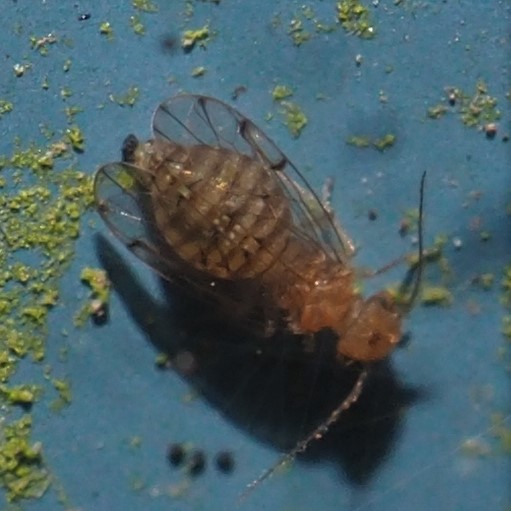
Note: You can enlarge any picture by clicking once or twice on it. You can go back to the home page by clicking the return arrow at the upper left of the enlarged page.
The E. meridionalis that arrived all seemed to have enlarged abdomens. When I first started to be aware of their presence, they had already started laying eggs. The eggs were apparently carefully coated with some springy kind of protective covering, unlike the naked eggs laid by Graphopsocus cruciatus. These pictures are from August 13, 20, and 27, respectively. Note: another thing I learned from Diane Young is that the females are parthenogenetic, meaning they can bear young (lay eggs in this case) without mating with males.
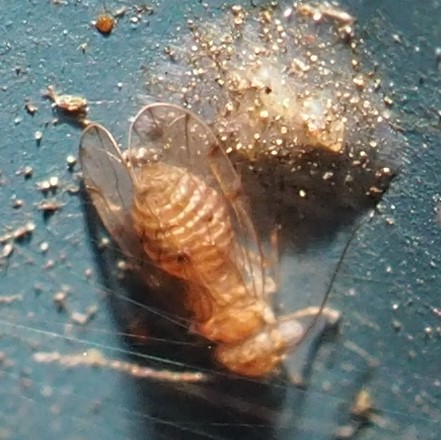
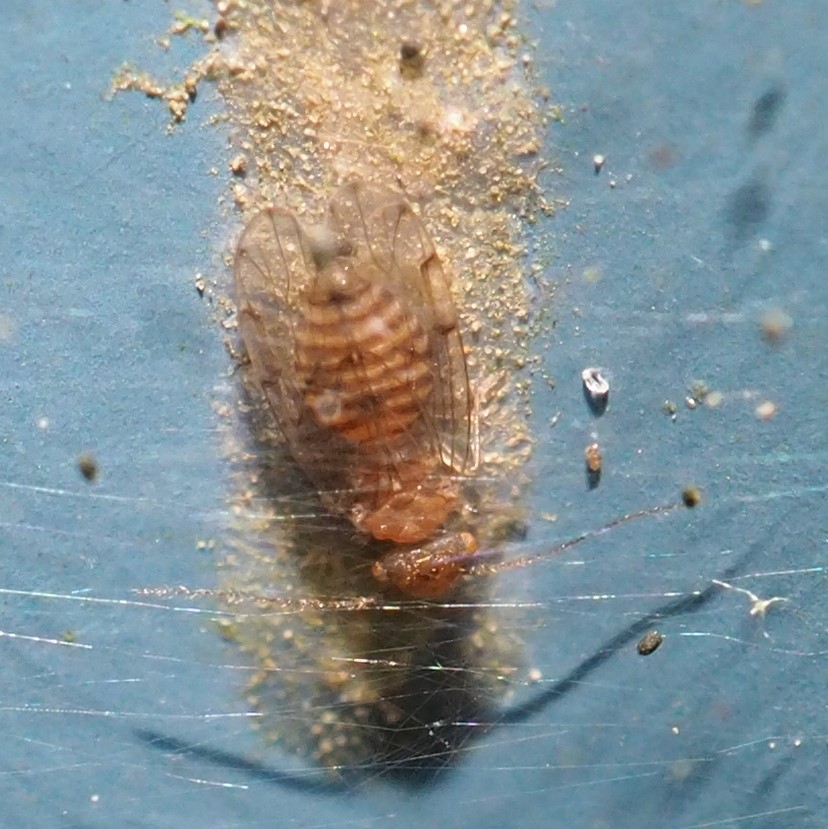

This egg-laying continued into September. Picture 1 was taken on September 2; the others on September 3. In picture 2, you see a set of eggs that seem to have hatched somewhat.
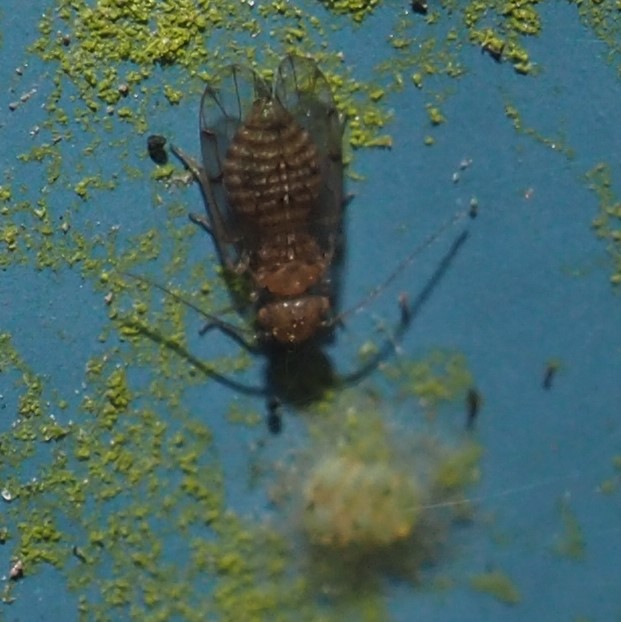



Compare the above picture from Sept. 2 with picture 1. On September 6 (picture 2) she's Baaaaack, laying more eggs. On the 8th (picture 3), she has FOUR clutches of eggs. So now on North panel 8, we have the 4 clutches of eggs and the mother seemingly indefatigable. Across Panel 8 on the right side there are a lot of already hatched nymphs (I THINK they're Ectopsocus, but waiting to see them mature. Some of them have wings developing.) I'm wondering why they seem to be two different sizes. Are the smaller ones males or did they come out of the egg another day?


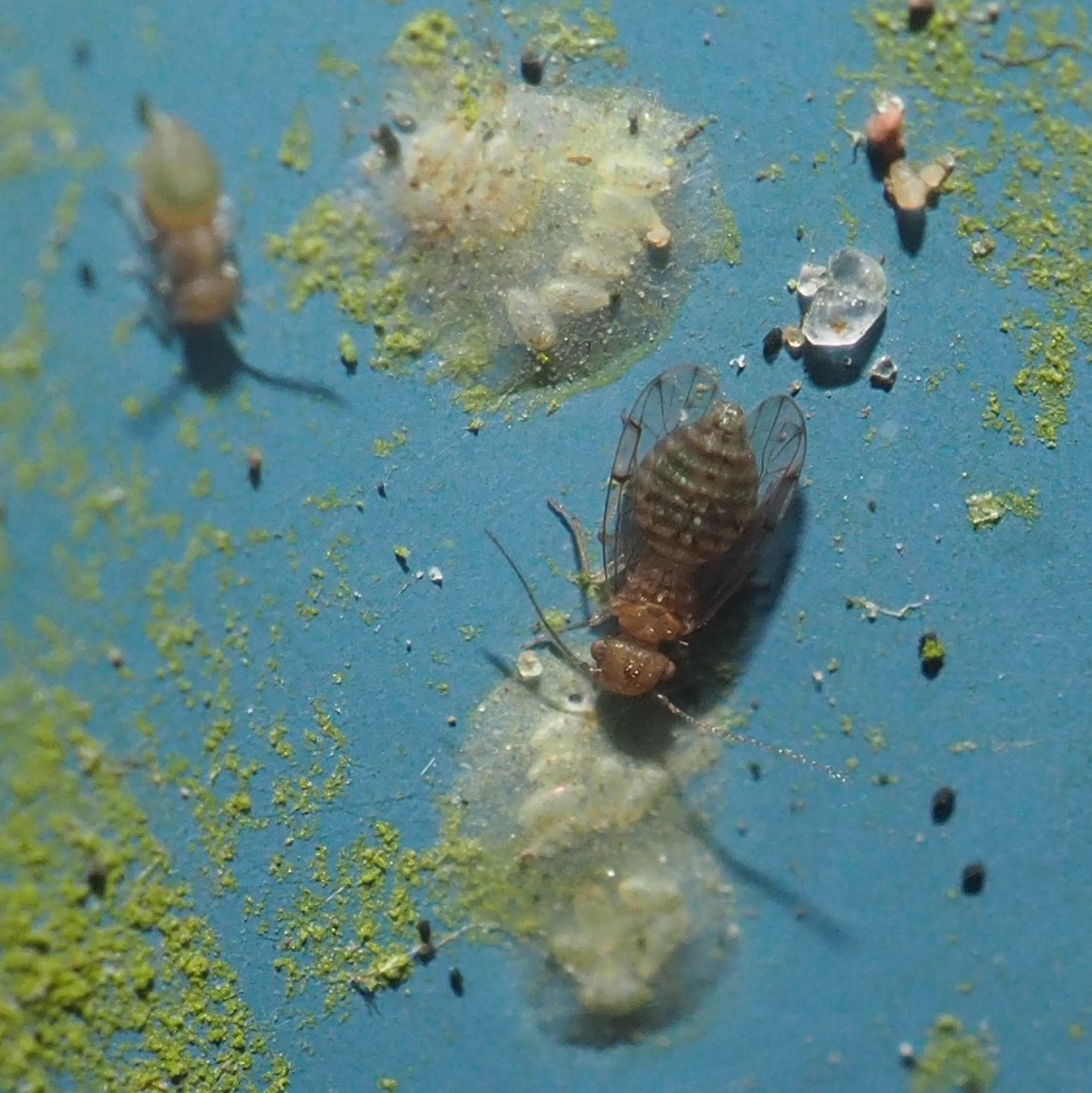

This yellow-eyed grey or light tan Barklouse is a recent adult. I hadn't seen one since June. Picture 2 shows it on June 18, while Picture 3 shows the nymph on June 11. Picture 1 appeared on September 2. We now have a name for it: Anthocaecilius sommermanae. (This was lifted from the September 6 2020 Blog.)
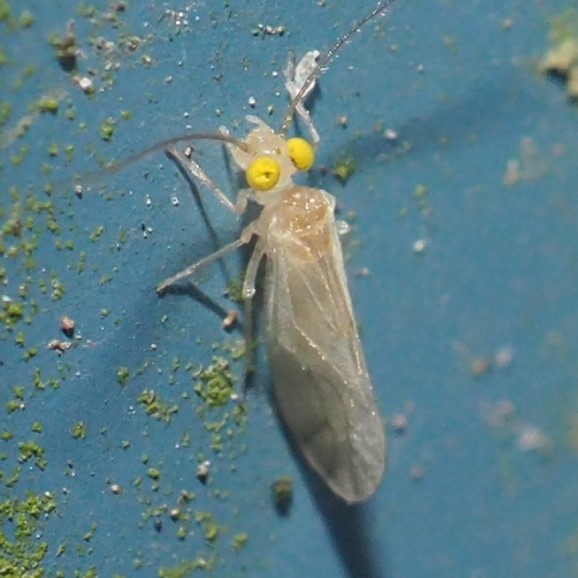
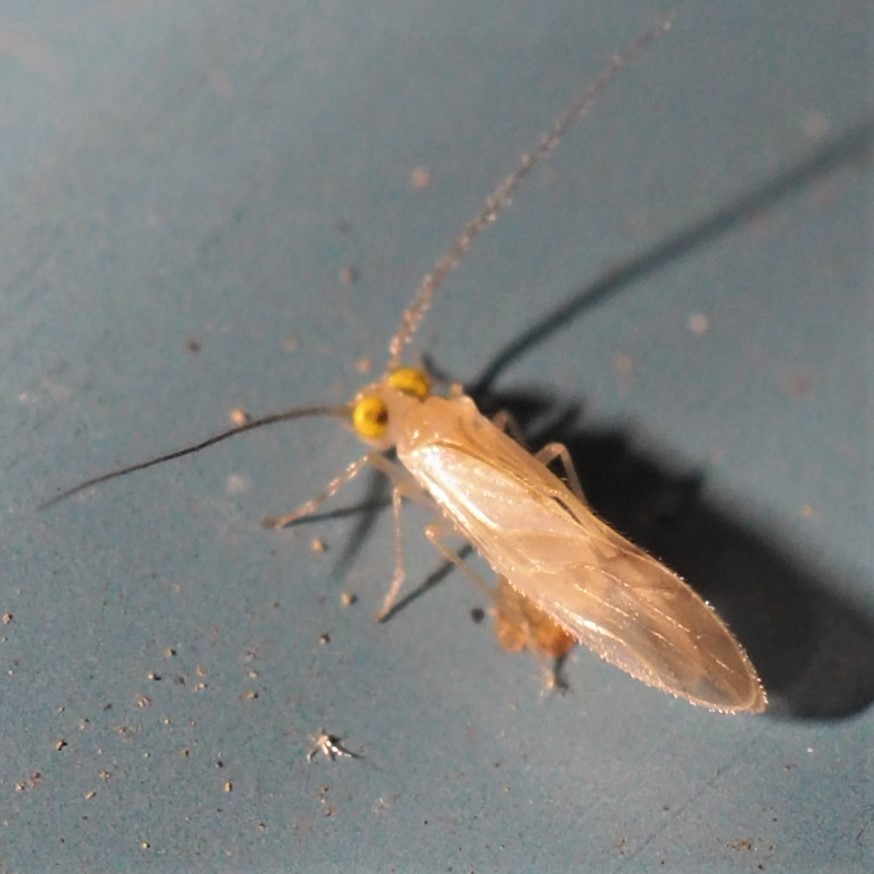
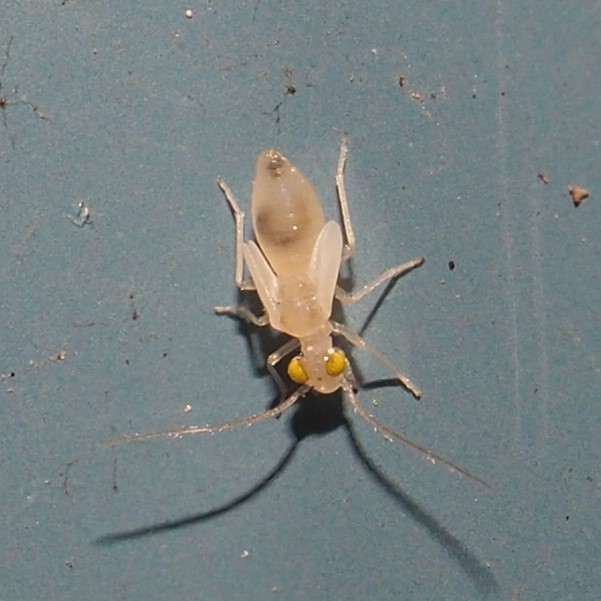
Now it rains like crazy on the night of September 8-9. When I go out to check at 10:35 on the morning of the 9th, to my consternation I see that somehow five nymphs have moved over to the eggs. The next three pictures are from 1:15, 8:11 and 8:16 pm. Now maybe some of the eggs were washed away in the rain. MAYBE the nymphs are cleaning up the leftover protective stuff. But in the last picture you can see some disturbing places where clearly some eggs are gone. Do we have cannibals?
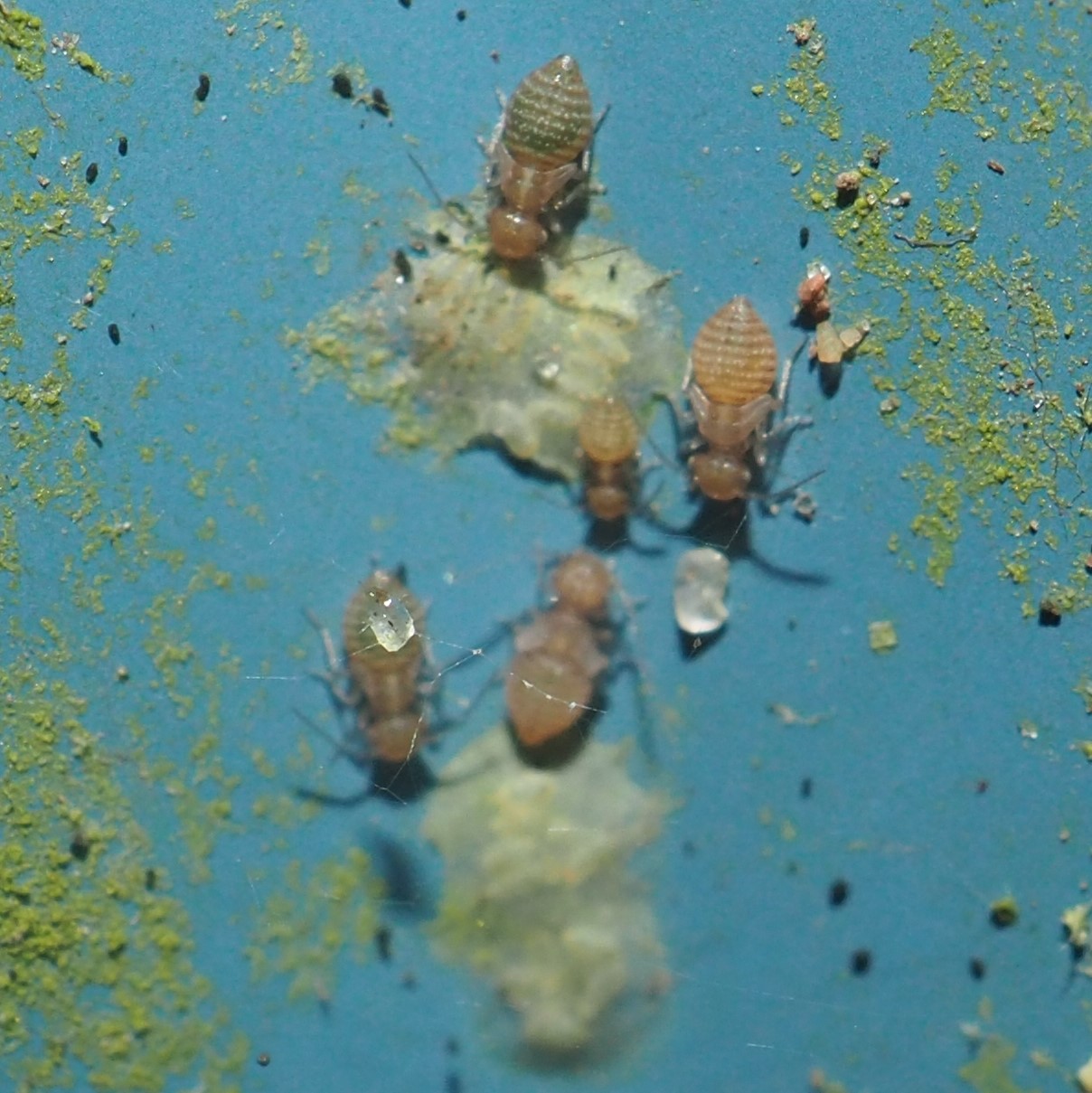
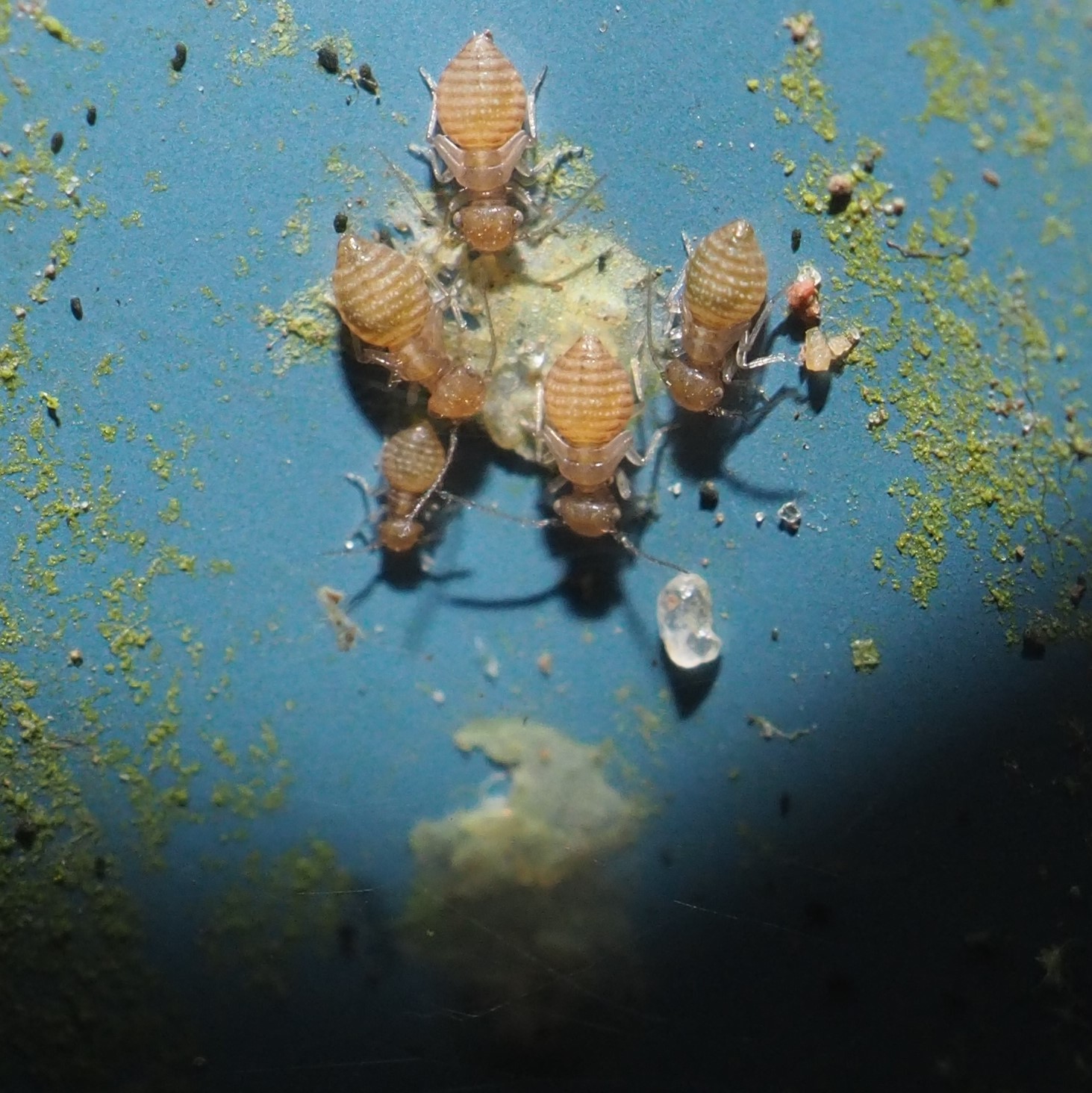
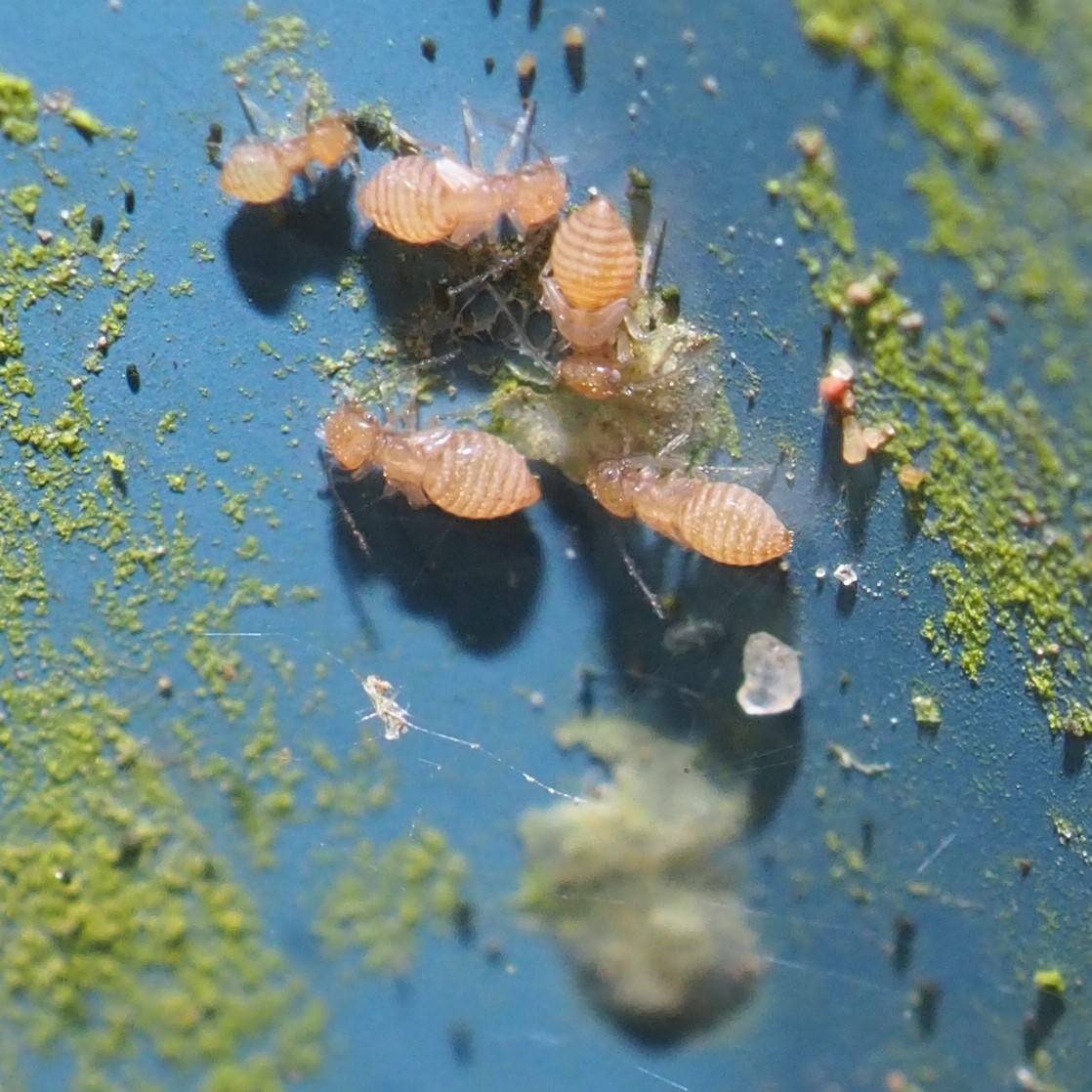
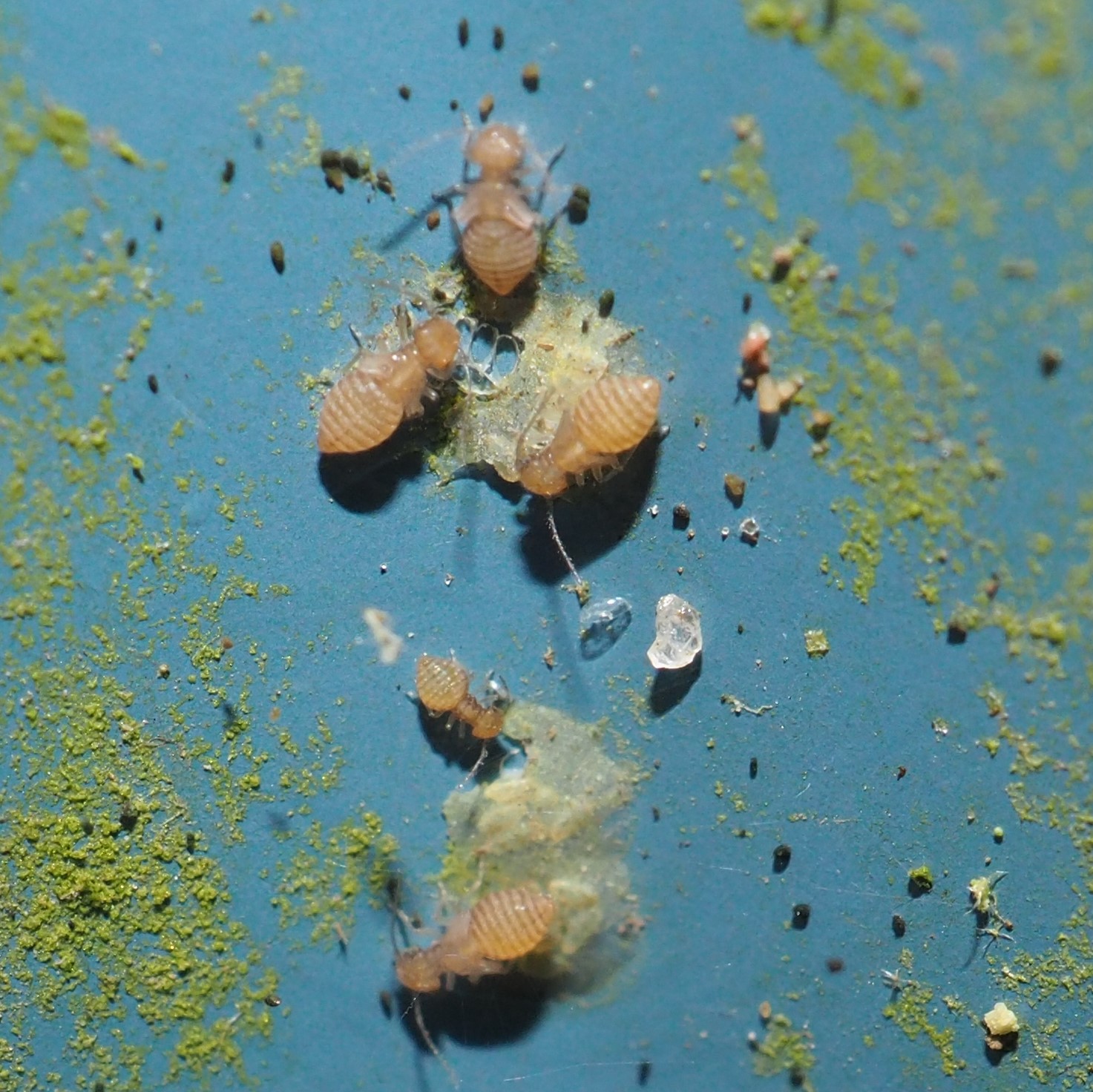
On September 10, checking again showed only one of the "cannibal" nymphs still on the eggs. Unfortunately something else had landed on it - don't know what - but each shot had it right over the nymph. Picture 2 is actually still on the left-hand side of North Panel 8 and shows someone laying eggs and a bunch of nymphs below. Picture 3 shows the female up close laying eggs. I'm betting it is the same female, since these eggs are only a small distance below the wrecked ones. I just went back out to check and there are still nymphs on the right-hand side (picture 4).
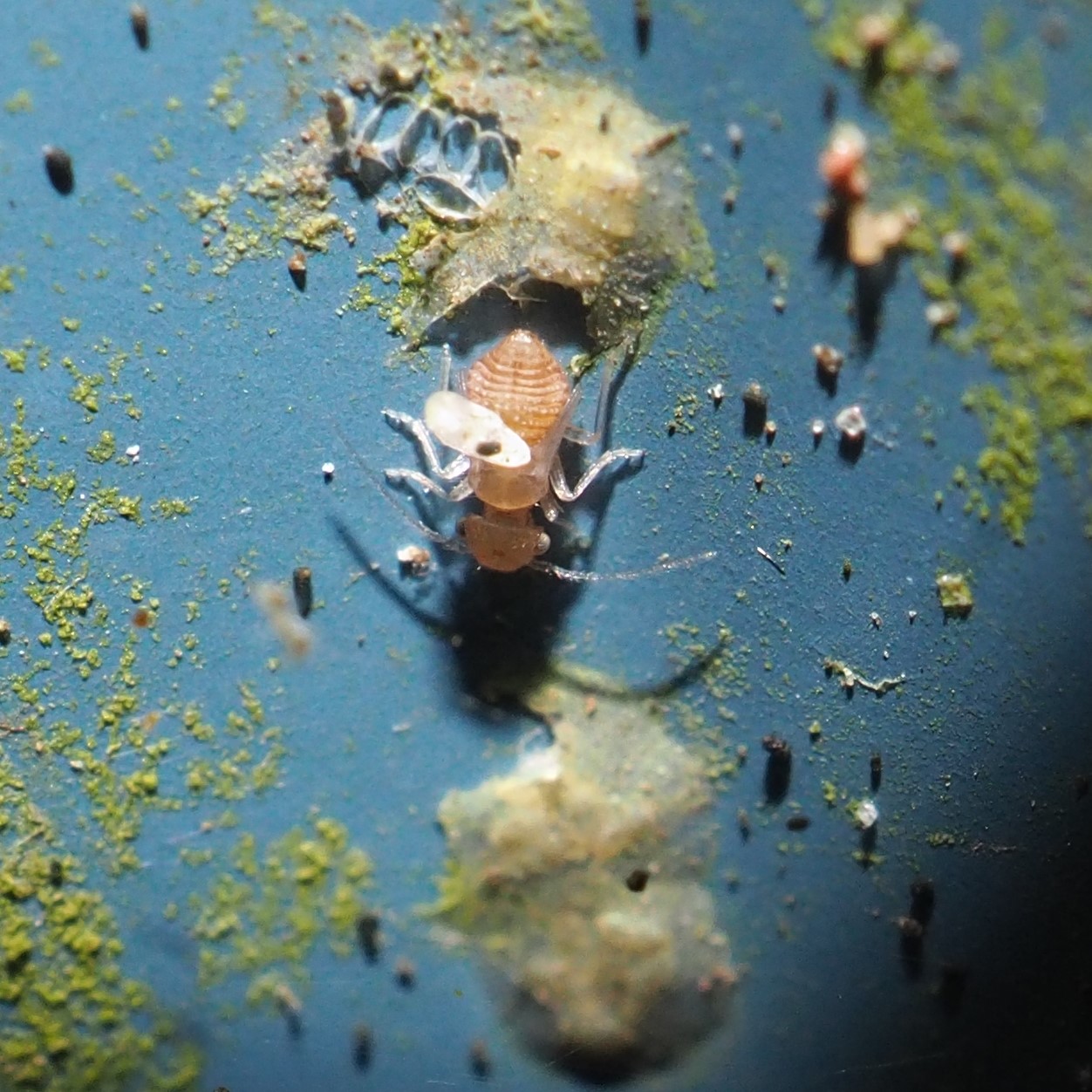

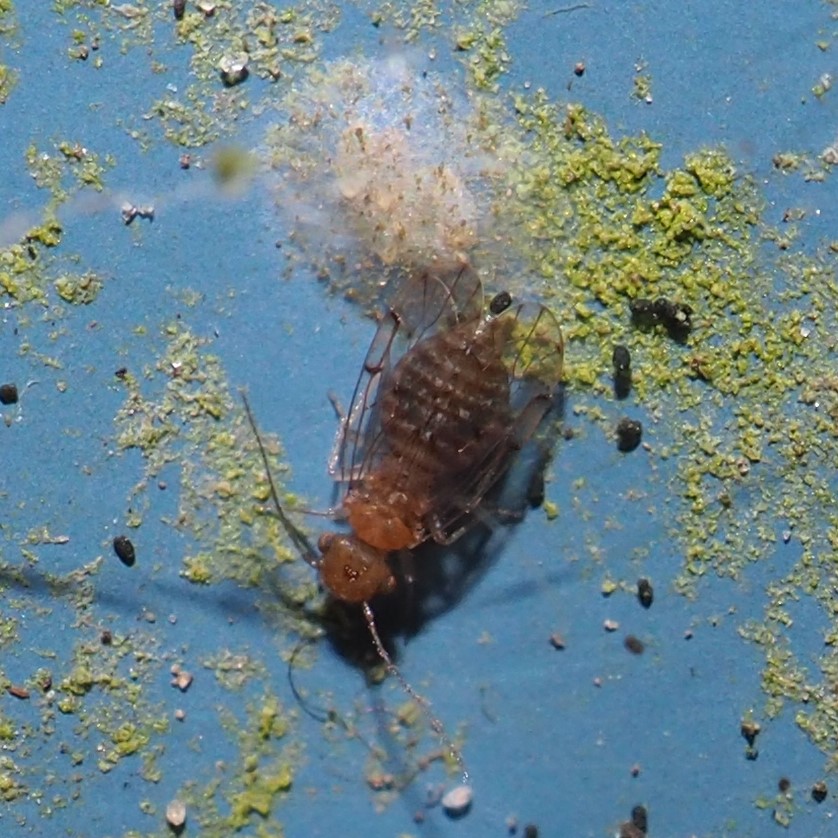
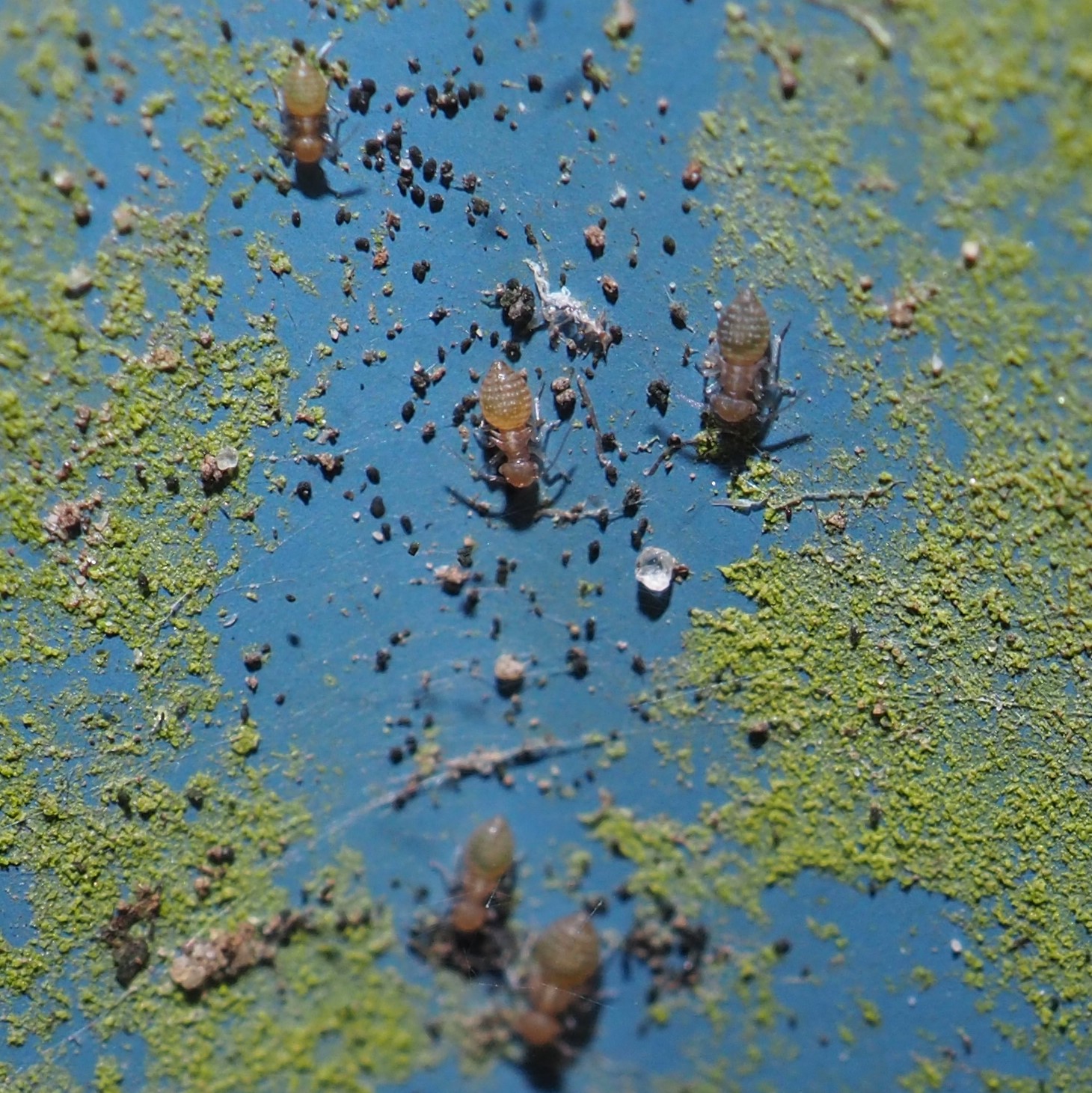
2:30 pm still Sept 10. Two nymphs on the old eggs. The female seems to be backing in. May be preparing to lay more.

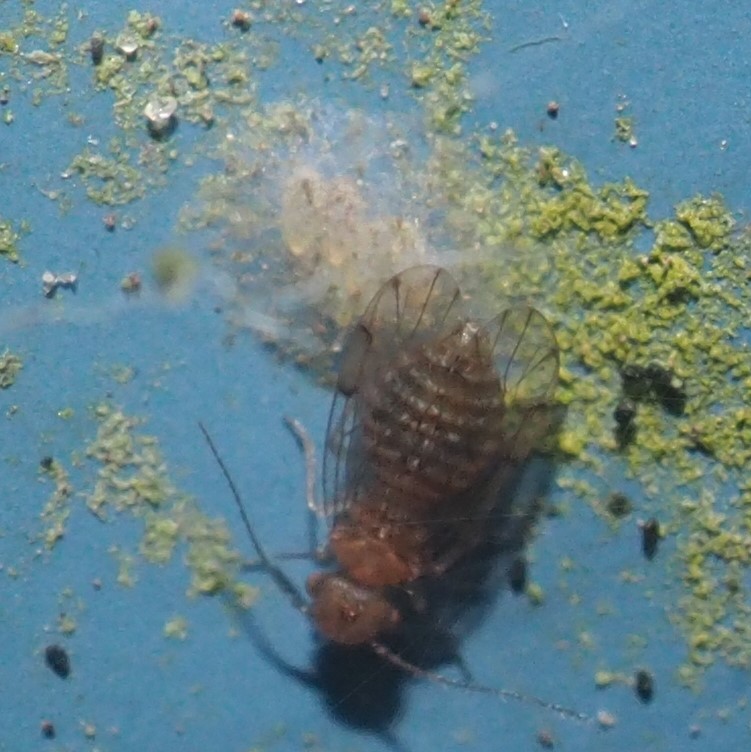
Well, here it is September 11. At 9:15 in the morning, the Nymphs are still near the eggs, but not interacting with them. There still seem to be some that haven't been dismantled. The female sat here all day without moving and not a sign of the eggs she laid yesterday. Oh wait! At 2:55 pm, there they are still are with a large nymph sitting beside them. At 4:30 pm, there seems to be another nymph (or maybe the same one) under the eggs.
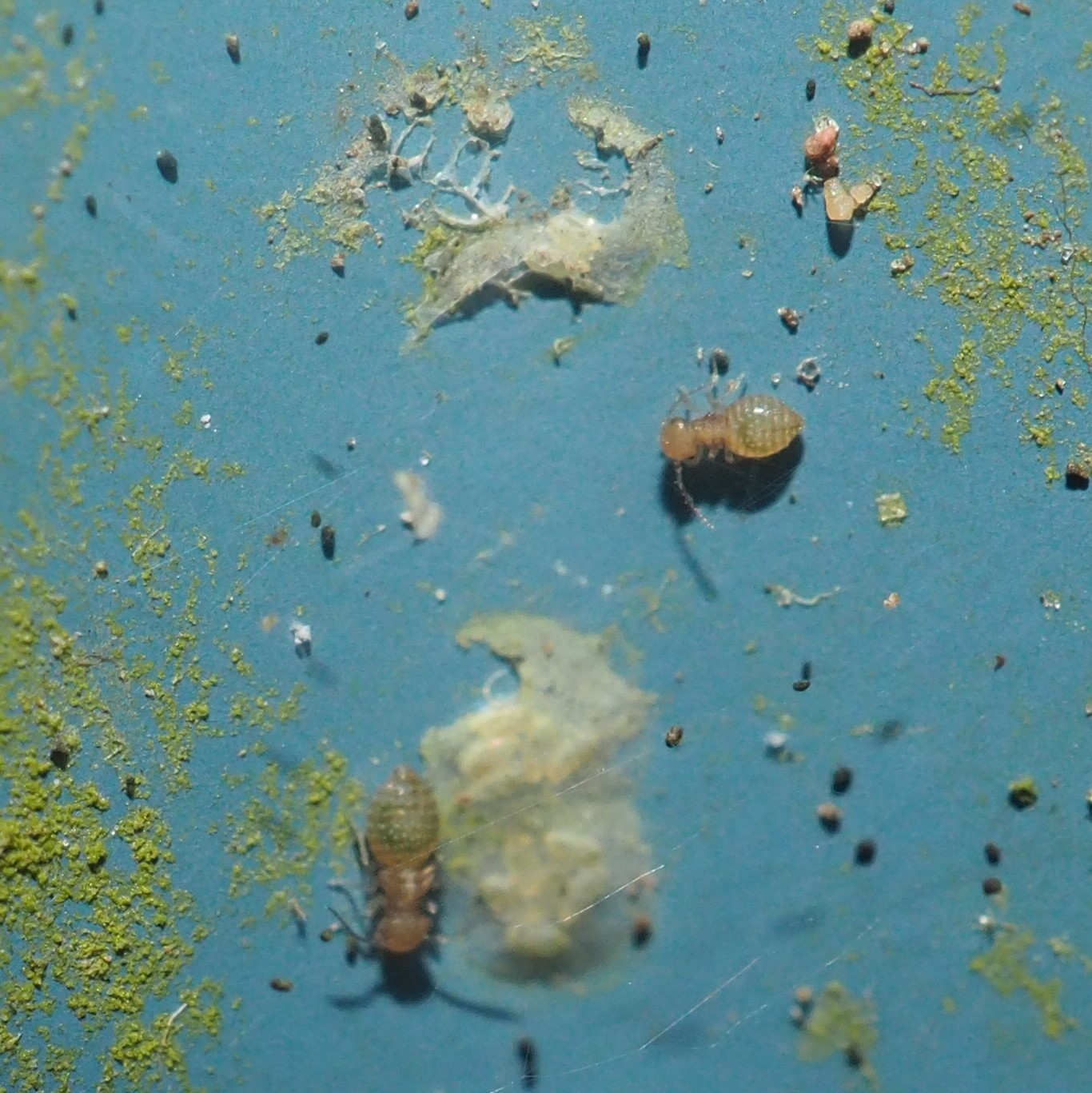
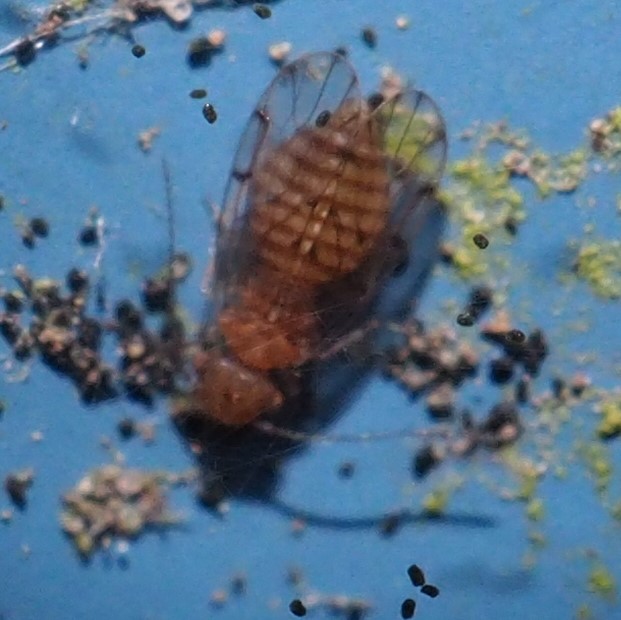
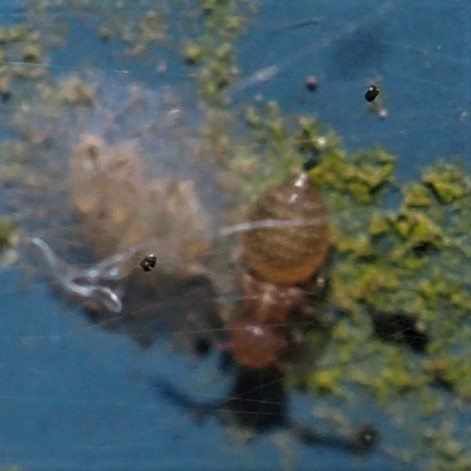

At 2 pm, there are still a couple of little groups of three nymphs each in about the same places in a vertical line below the old eggs.
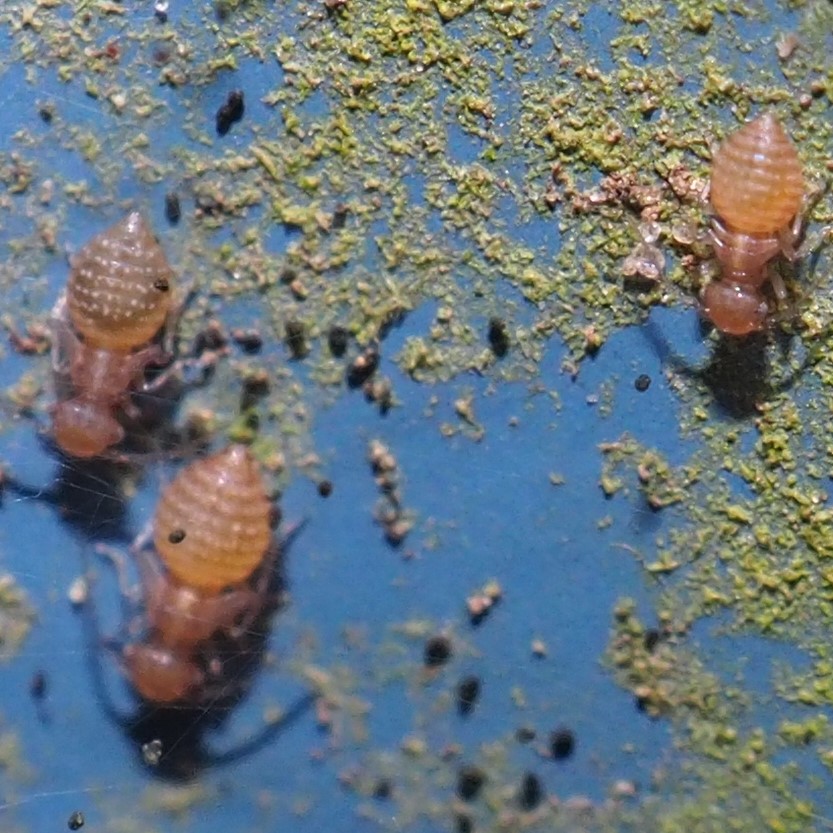
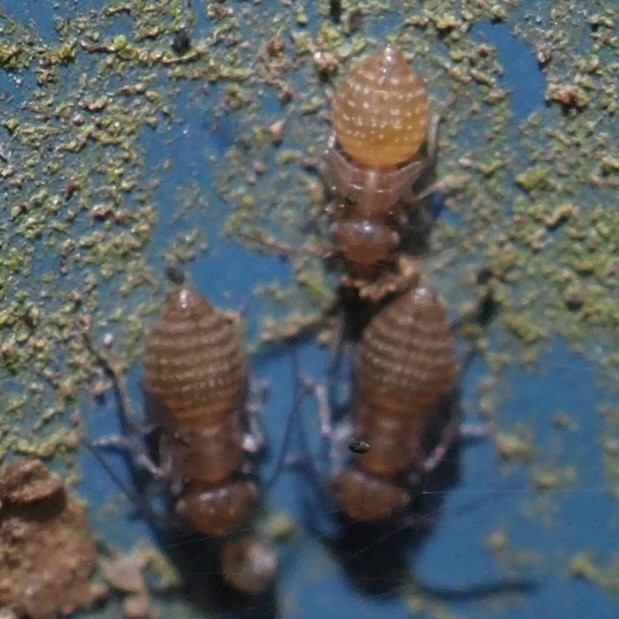
On September 12, 12:24 pm, the female is back to laying more eggs. Soon after, it is raining again. On September 13 at 11 am (picture 2), she seems to be laying again at the same spot. At 2:30 pm, She has moved downward and we can see that some of the eggs are missing.
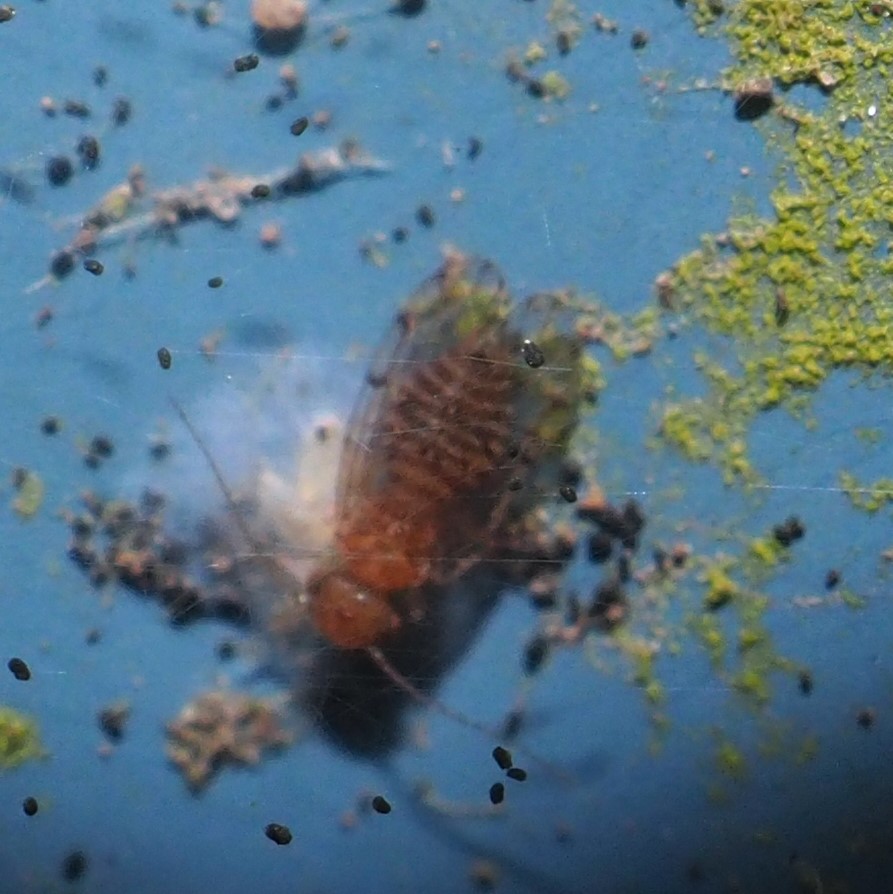
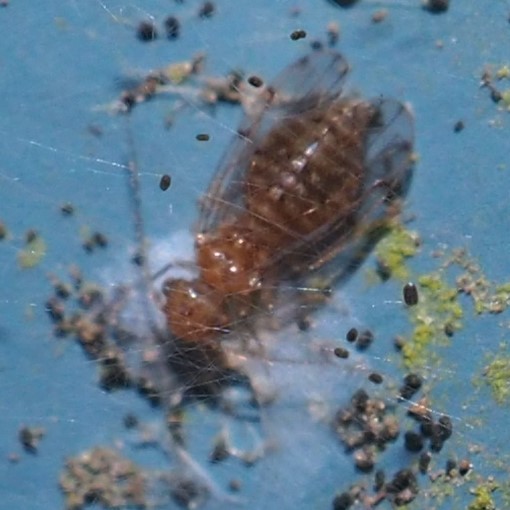
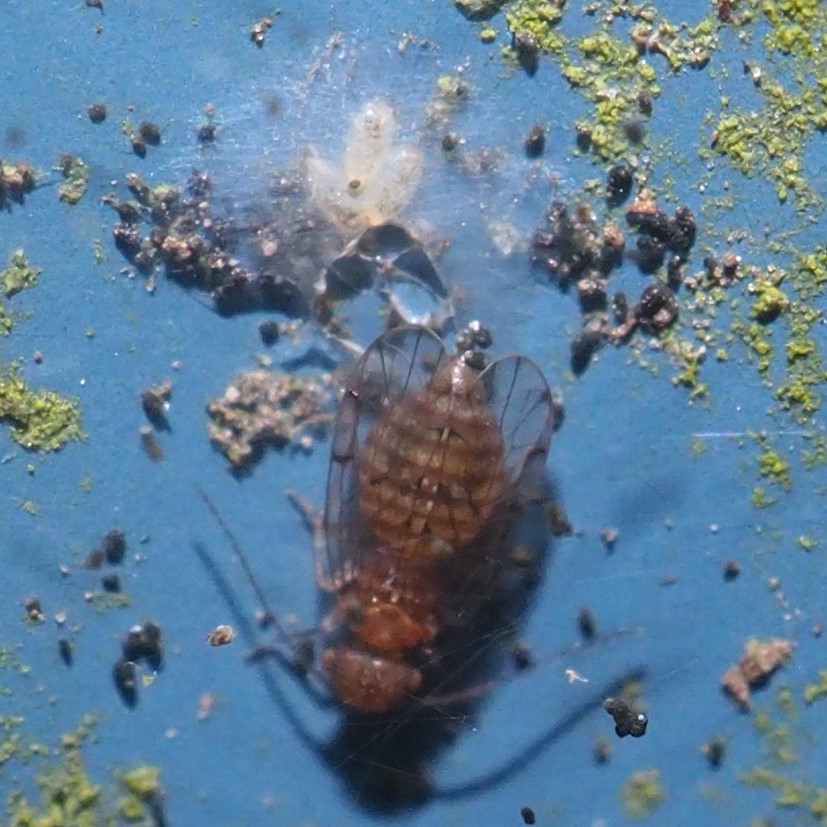
Still on the 13th, at about 11:30 am, this strange mystery creature seemed to have been eating this clutch of eggs laid on the 10th. Picture 2 shows the laying of that clutch. At 5:43 pm the mystery has moved to the right of the clutch, but I don't see any loss of eggs. And at 5:44 Mom is with the eggs but doesn't seem to be laying anything.
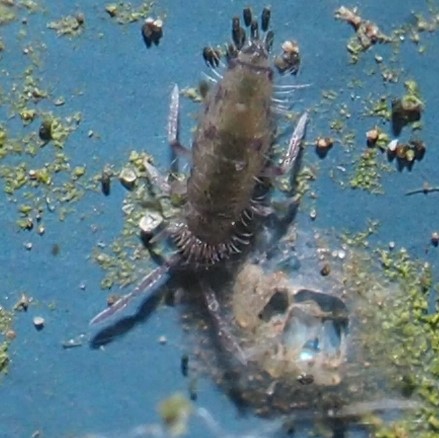

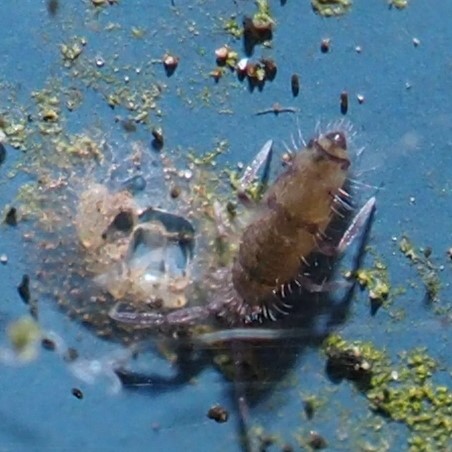
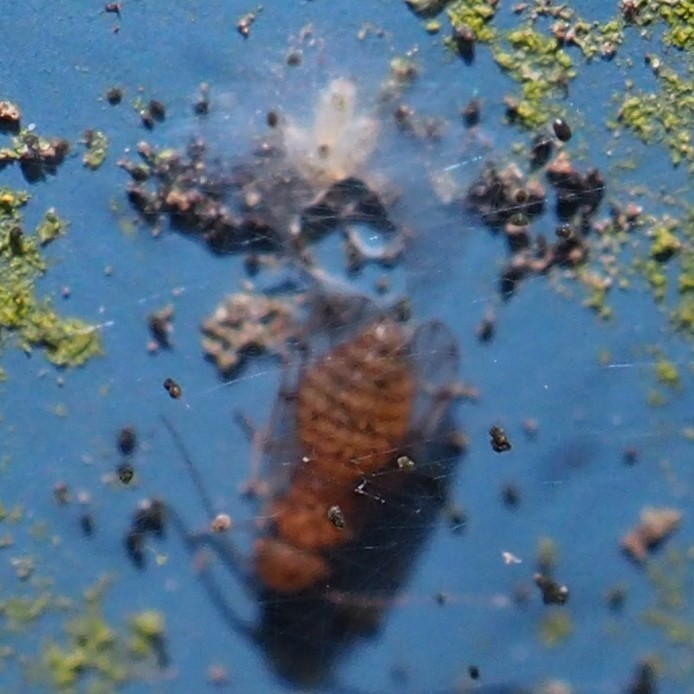
On the 14th, at about 10:32 am, Mom has once more laid a good-sized clutch of eggs. She is still in the same position at 1:05 pm. Picture 2, taken at 4:45, shows us that she is actually adding to the batch she started earlier and which that Mystery intruder seemed to have been eating some of. In picture 3, it is 8:32 pm, and picture 4 is 4 minutes later.
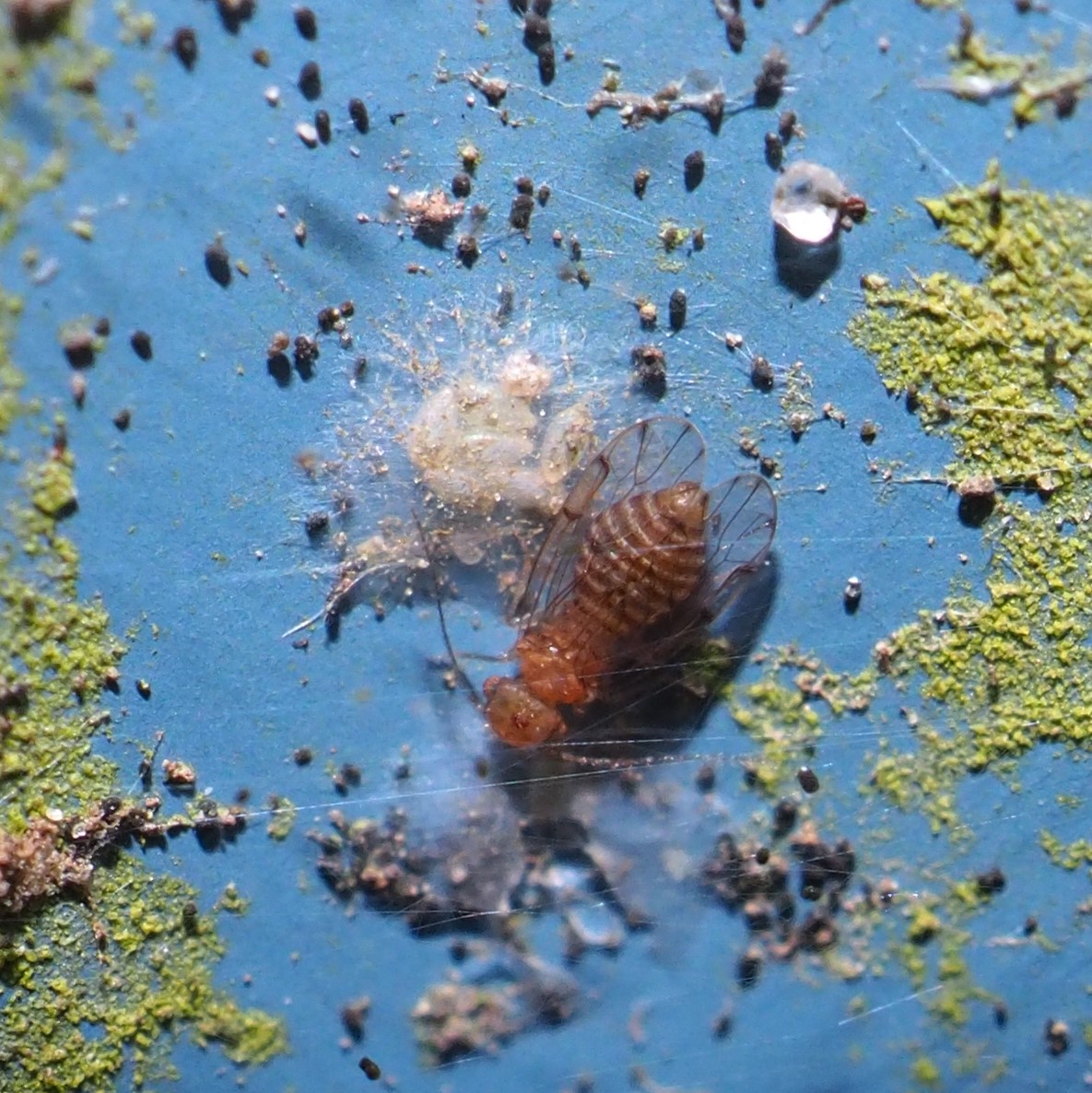
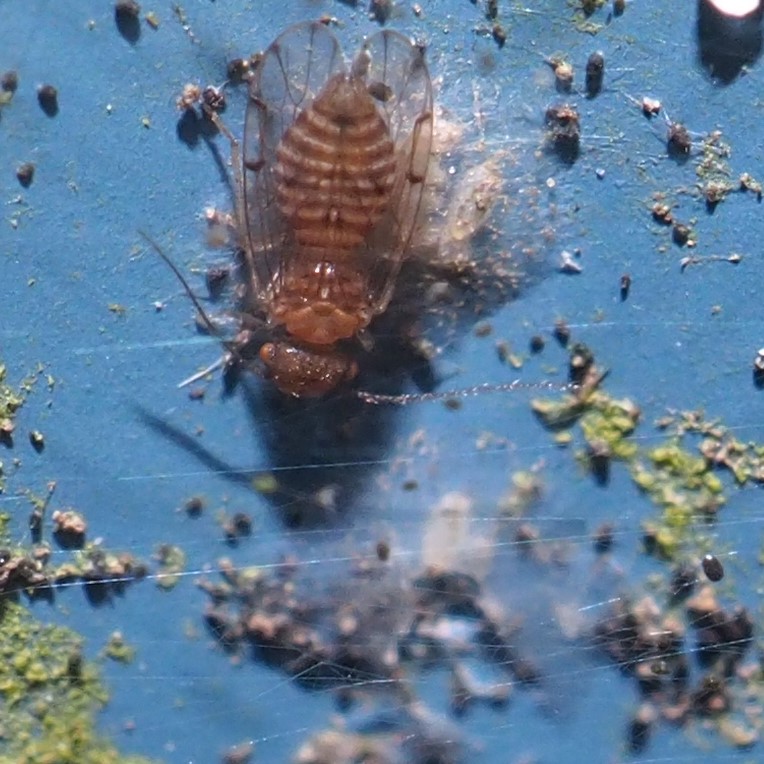
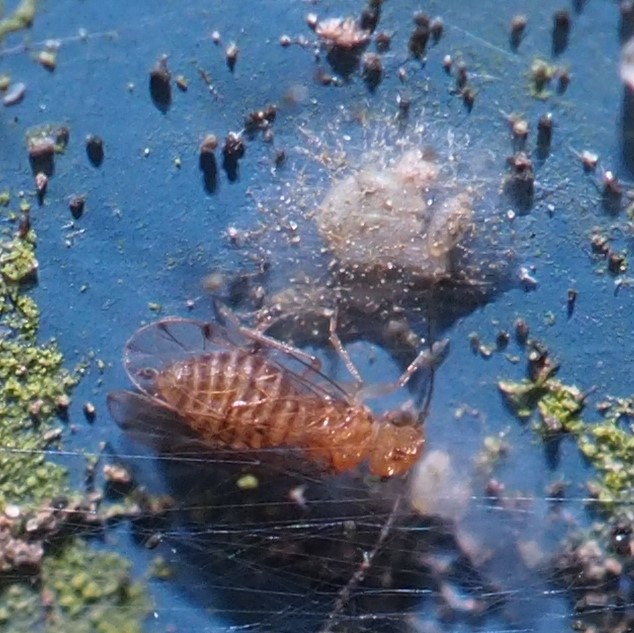
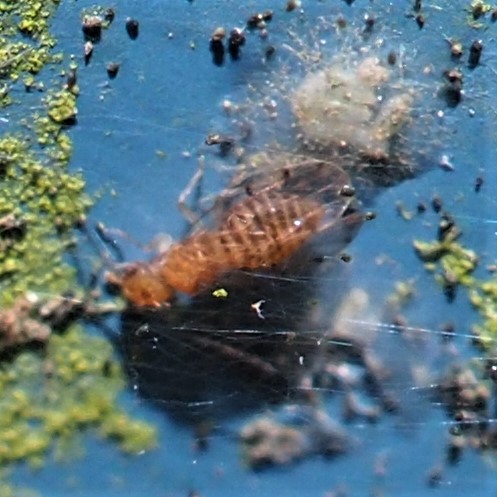
On the 15th, Mom continues to guard her eggs. Meanwhile on the lower right side of panel 8, the group of nymphs of different sizes remains. Panel 10 has a nice single nymph, while panel 7 (picture 4) has 4 nymphs, half big and half little.
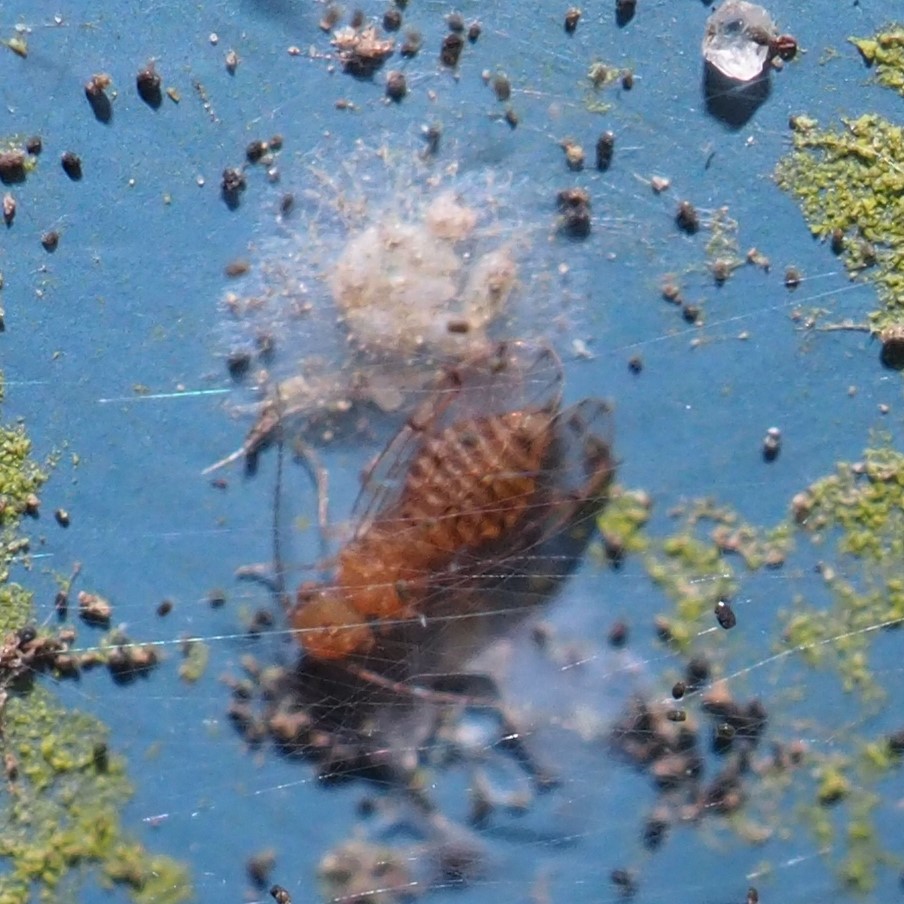
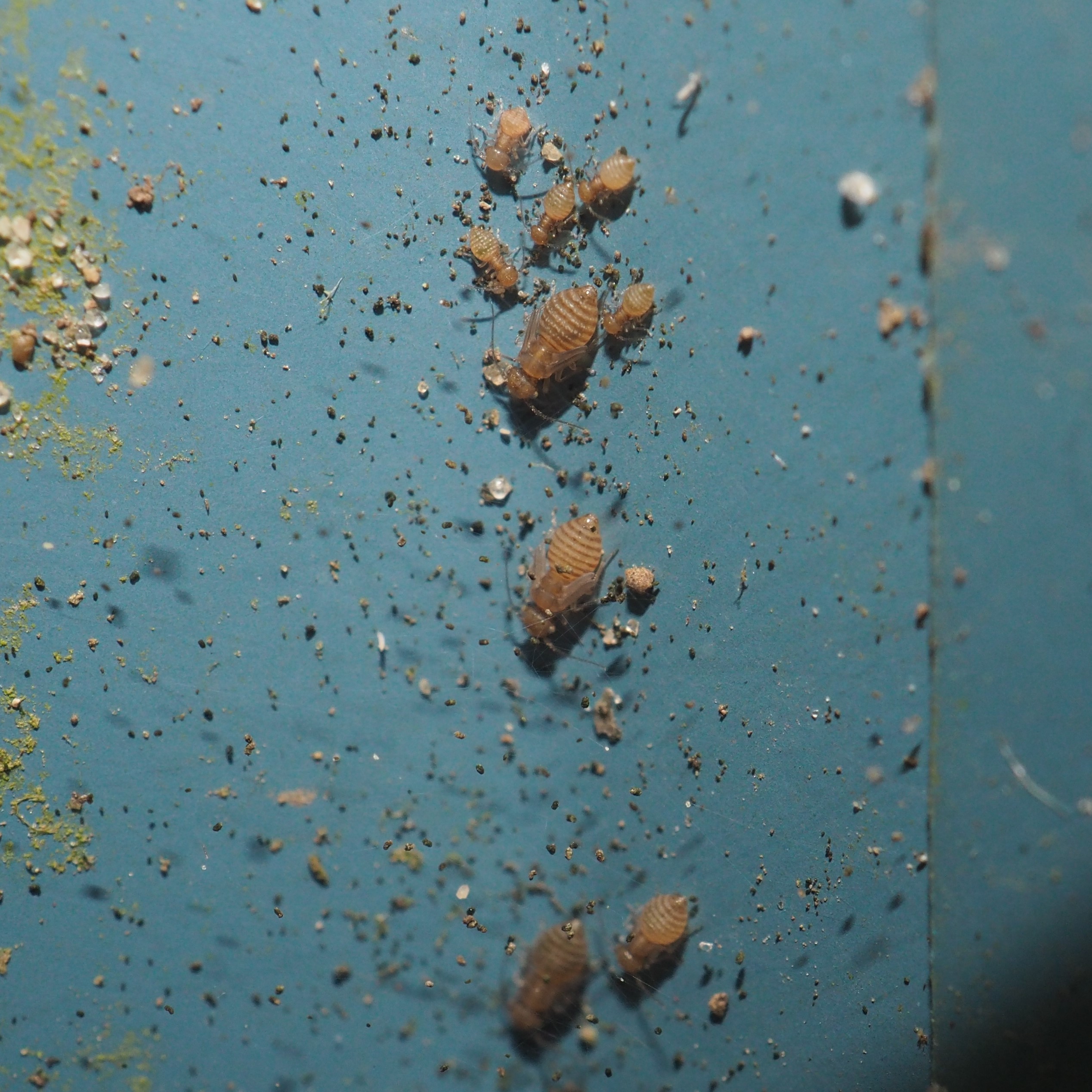
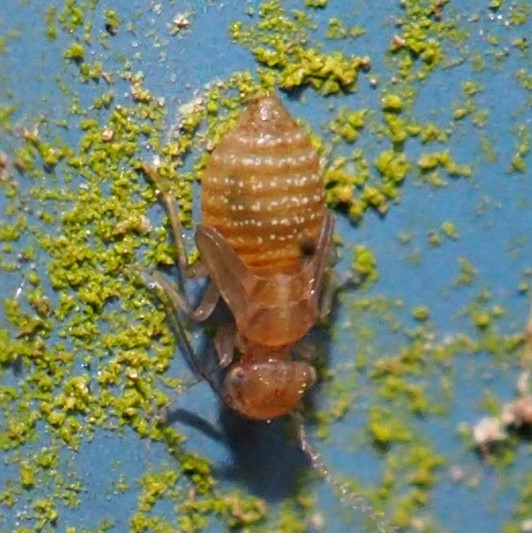
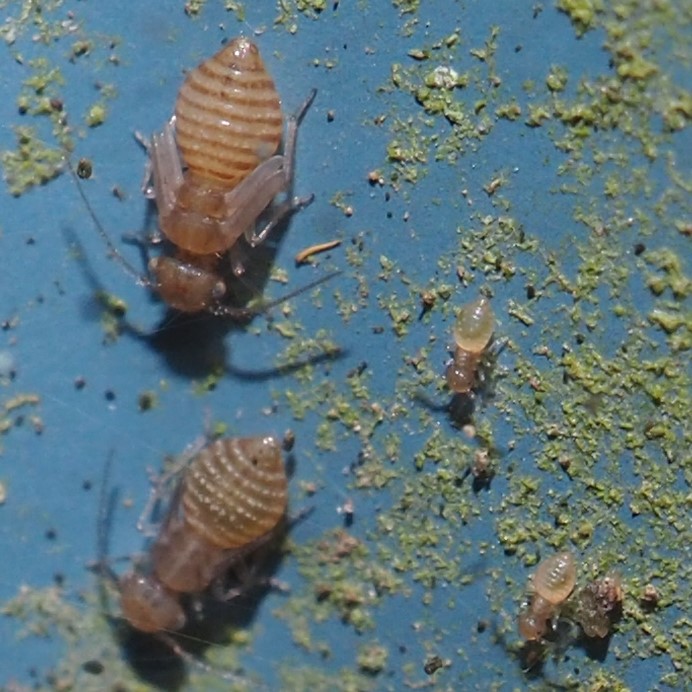
On the 16th at 10:16 am, Mom continues to guard her eggs on the upper left of panel 8. Not much change in the nymphs on the lower left side of panel 8. Next shows the upper right side of panel 8, Third shows the lower right side as it was on the 15th, and the last shows three of the four nymphs that were on panel 7 yesterday.
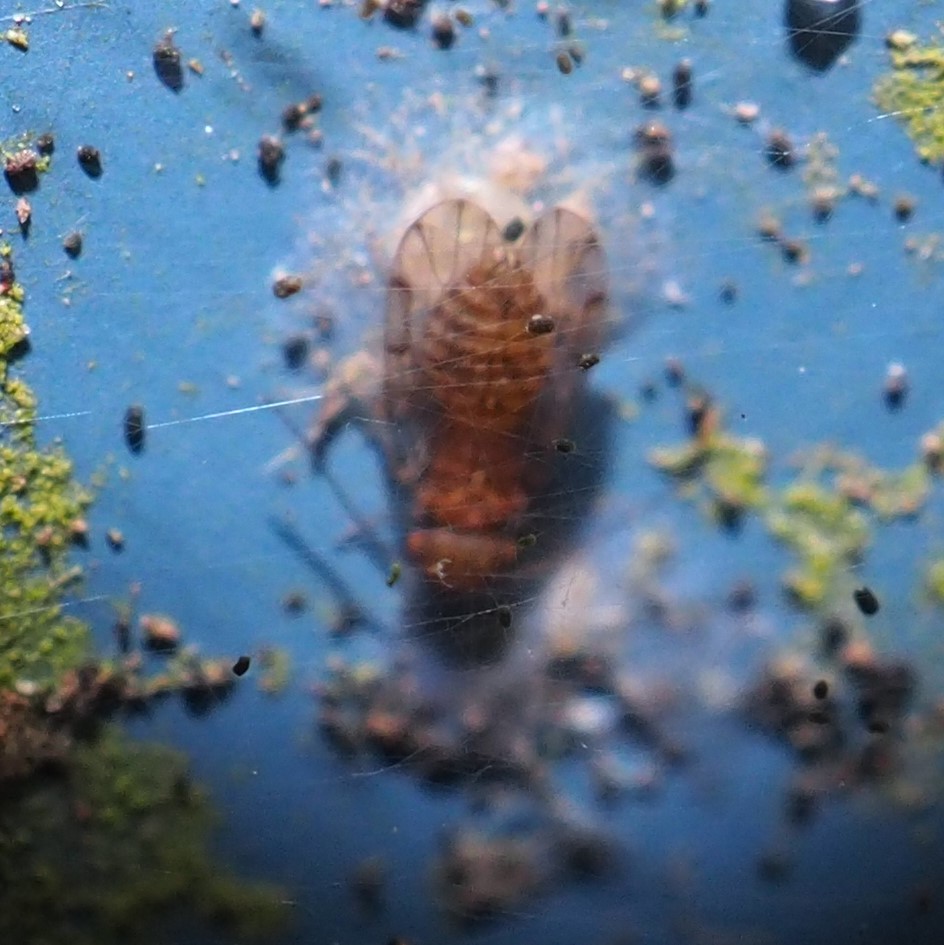
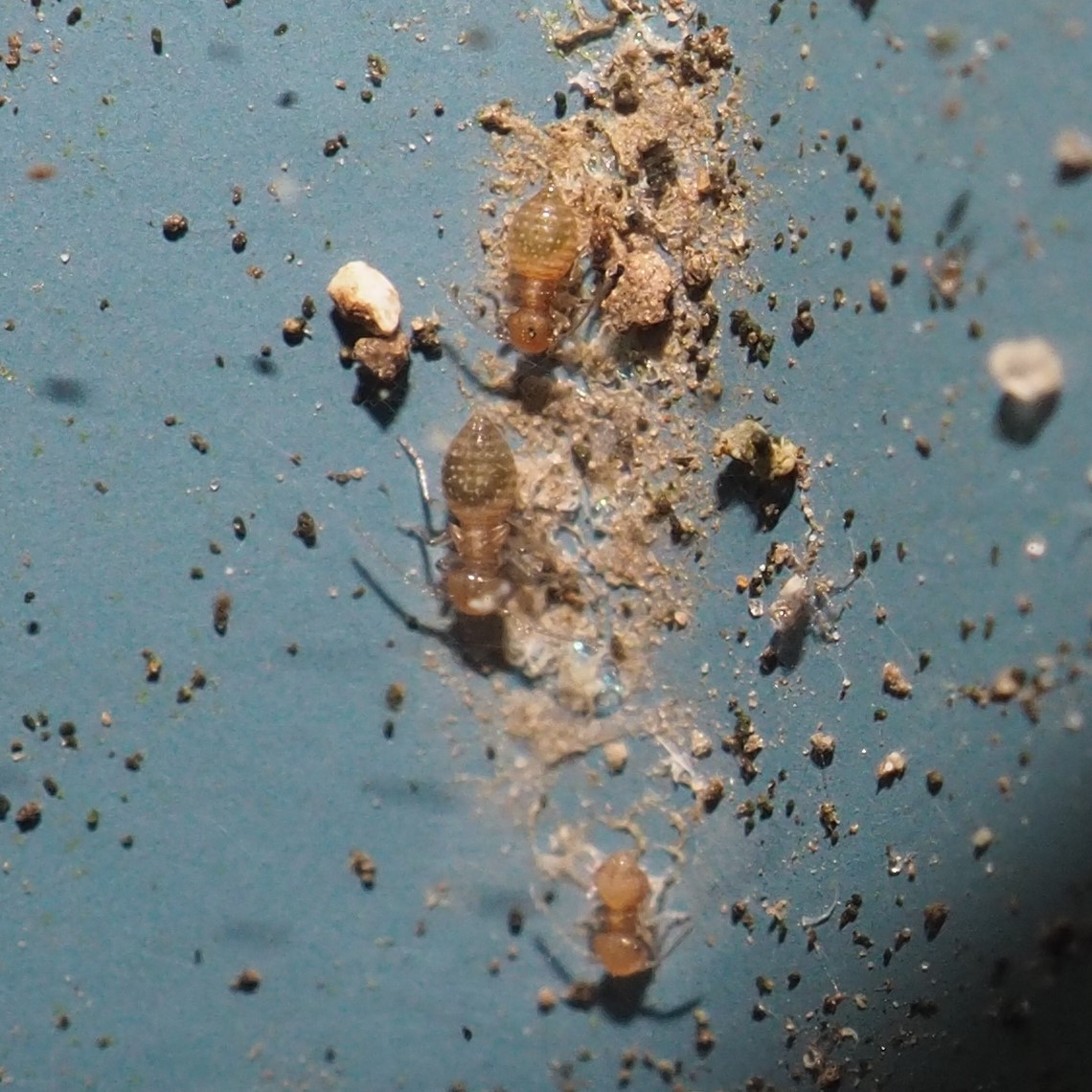

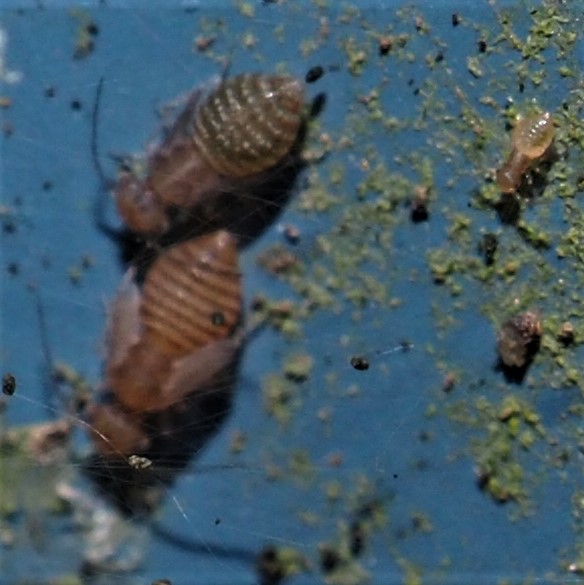
On the 17th at 10:43 am, Mom continues to guard her eggs. Not much change in the left side of panel 8. Picture 2 shows the upper right side of panel 8. Then comes the lower right side. and the last shows the nymphs on panel 7. Note in pictures 3 and 4 that in each, one of the nymphs has become an adult.
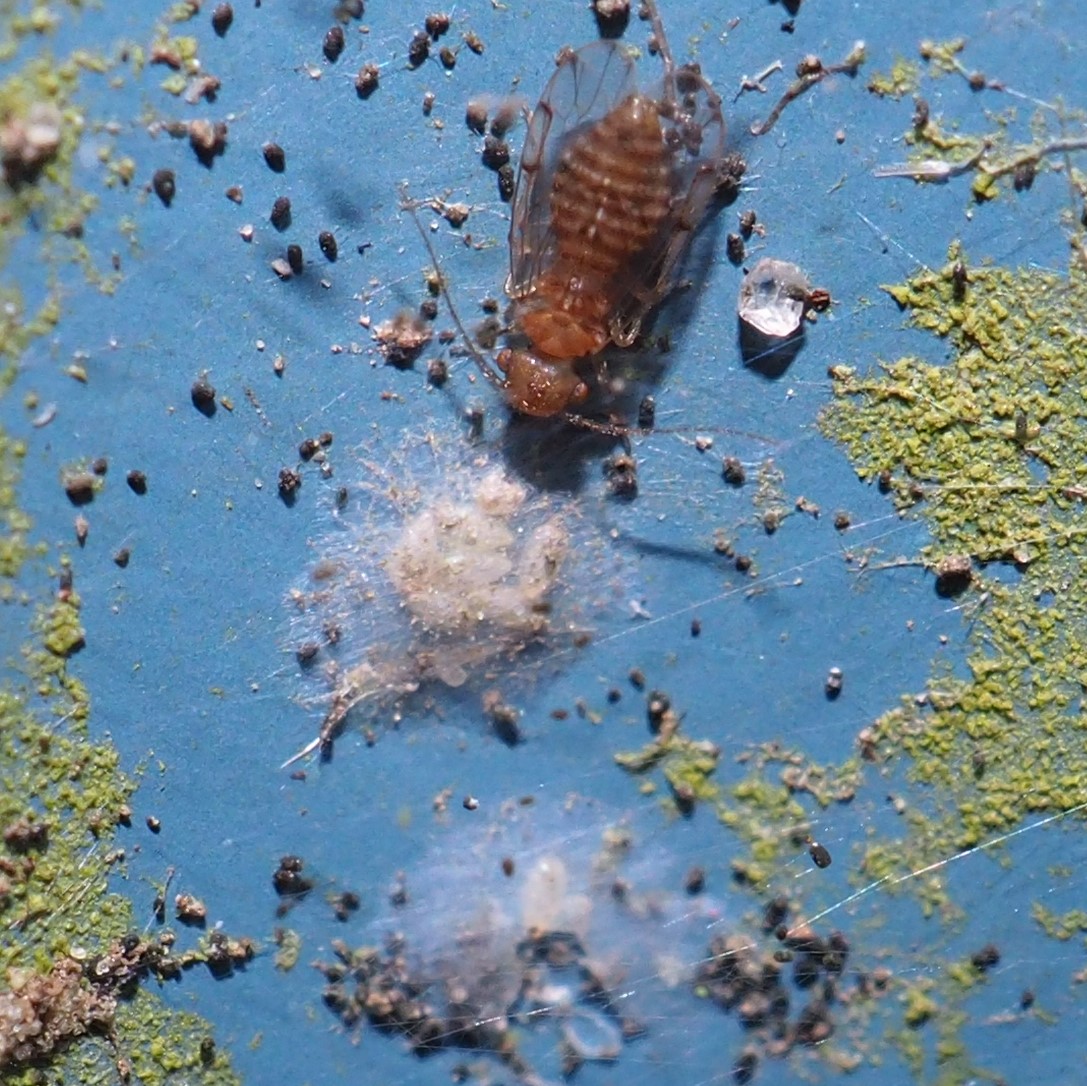
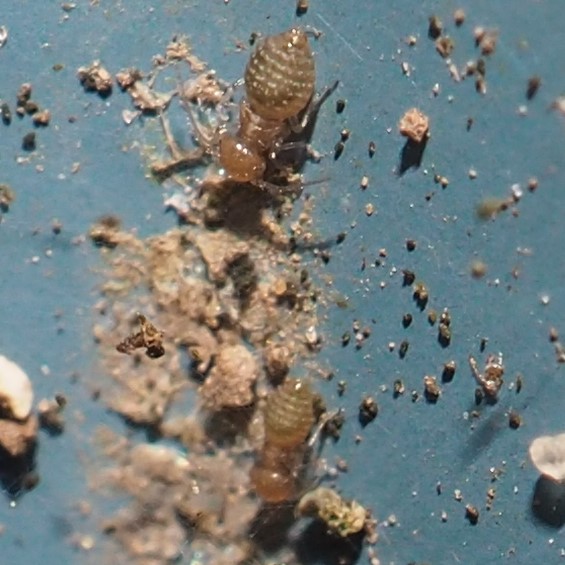
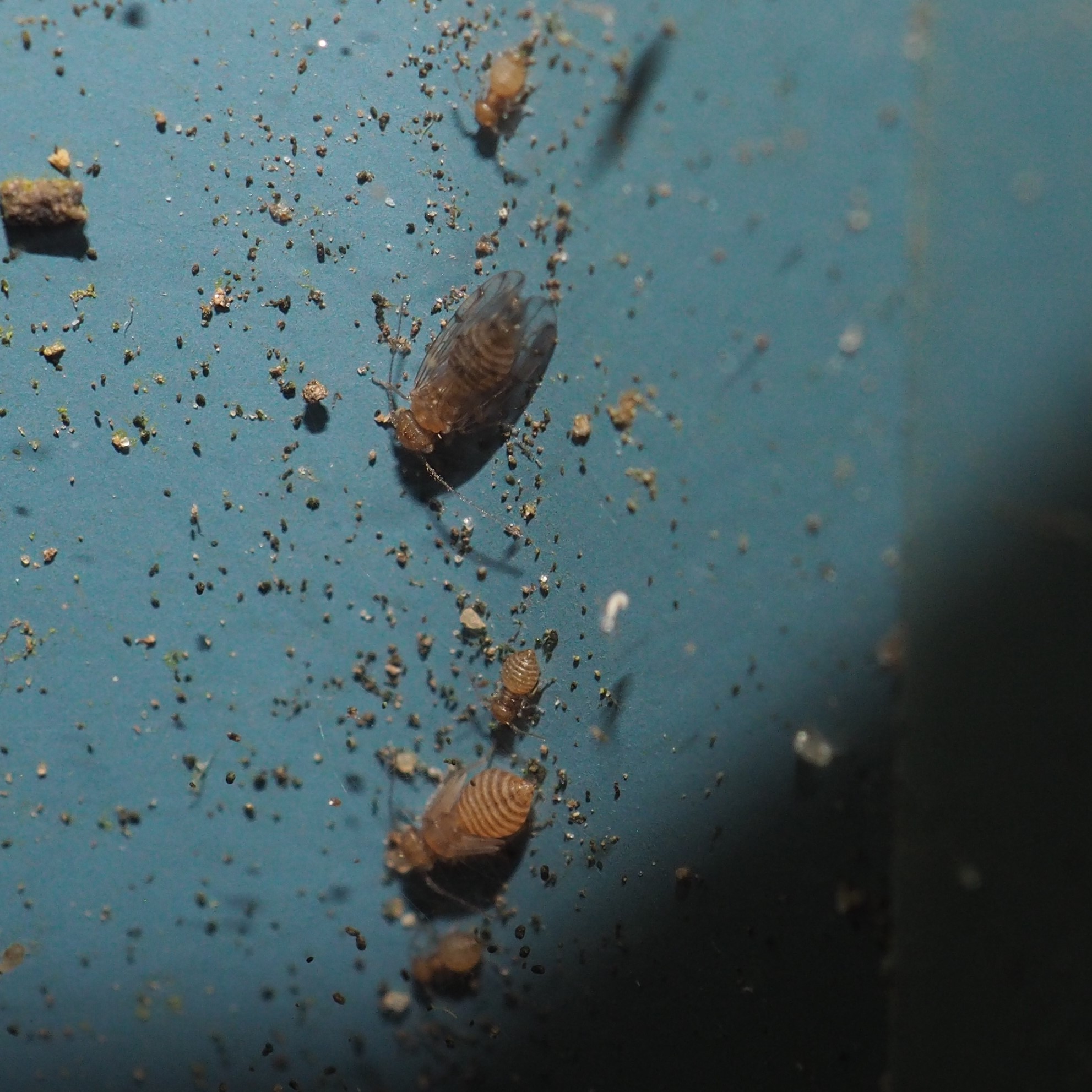
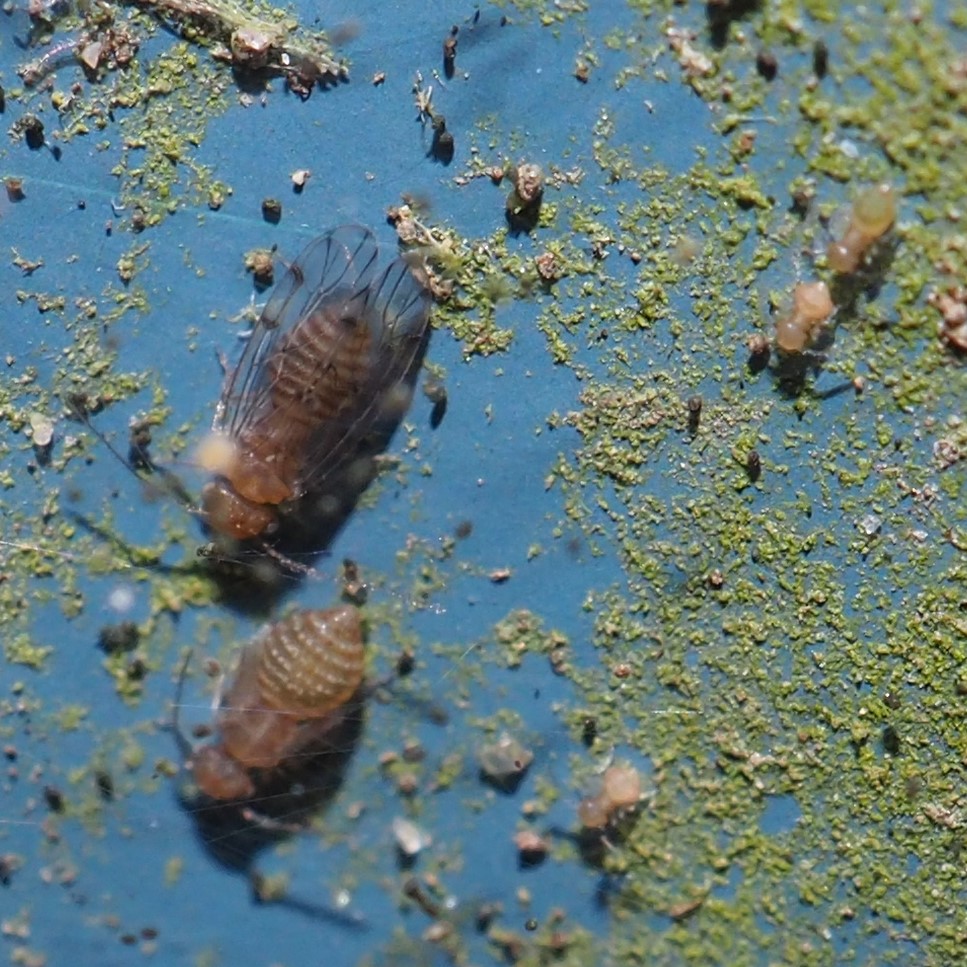
On the 18th at 10 am, Mom continues to guard her eggs. Picture 2 shows panel 8 left side under queen. Picture 3 shows that the new adult of panel 8, which has moved to the lower left (from the lower right). Picture 4 shows the nymphs on panel 7 including the one that has become an adult. (Not shown) Panel 10 still has the one nymph.

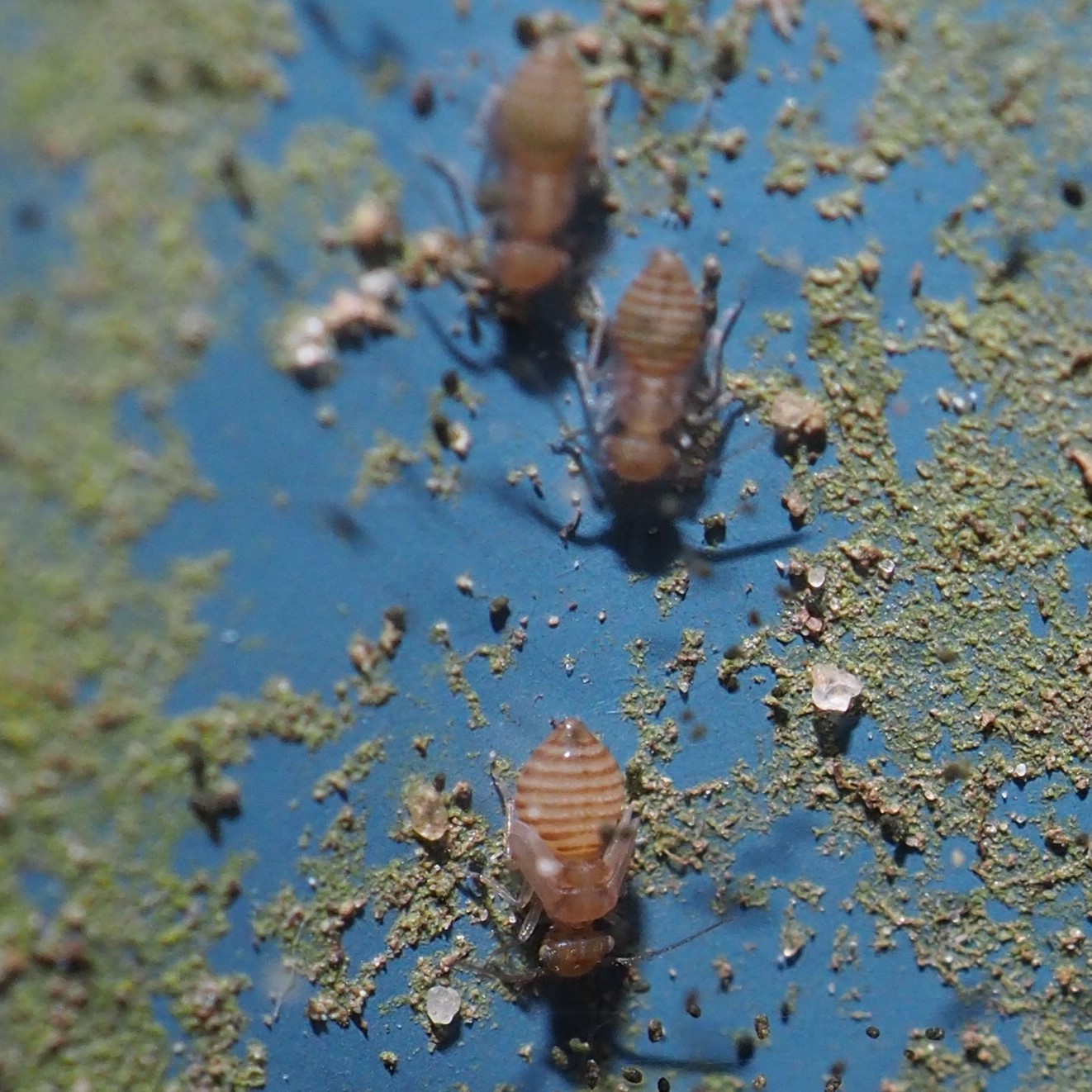
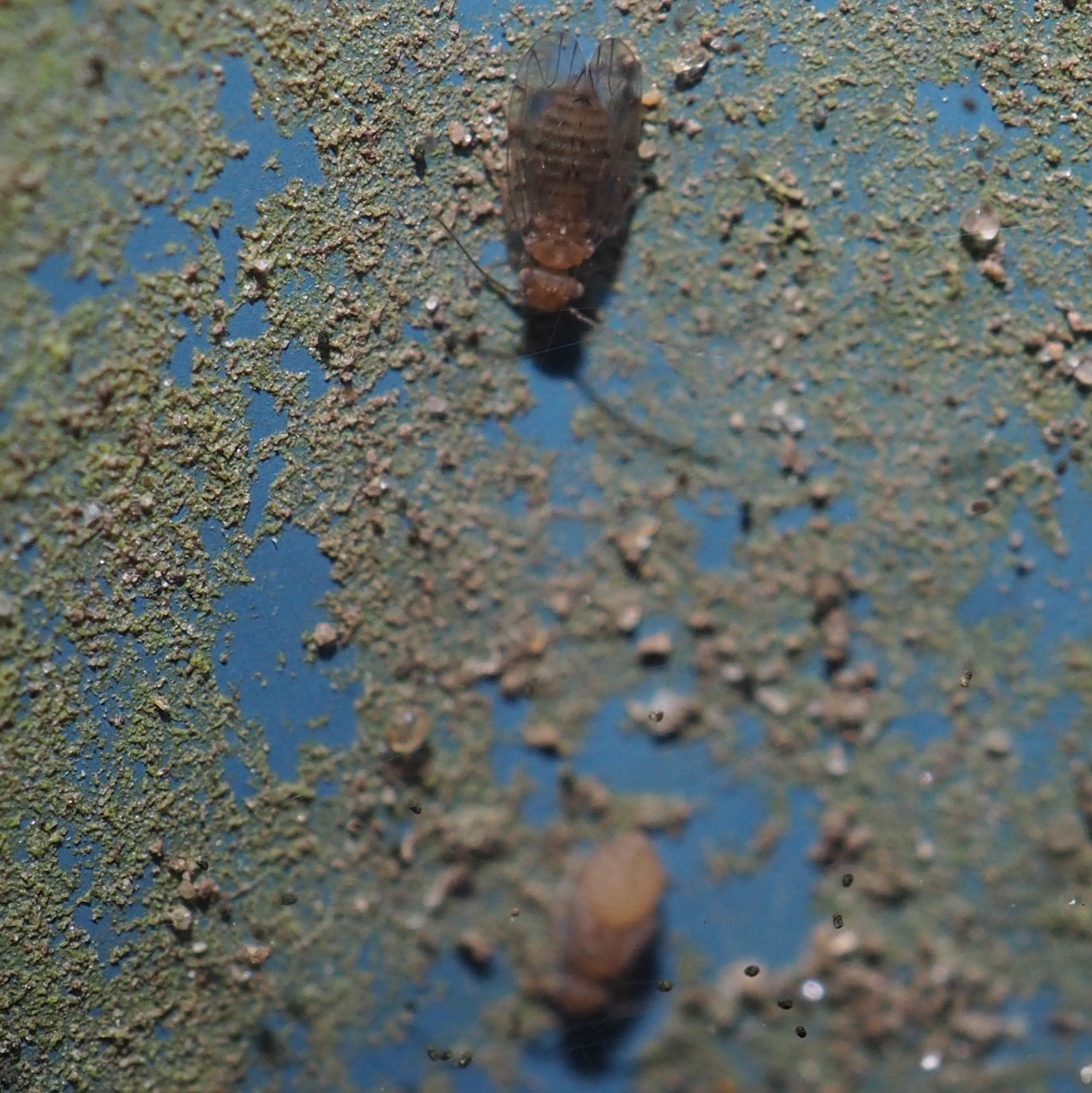

On September 21, Mom (the original egg-layer) has begun anew to lay new eggs. Meanwhile each day has brought more new adults on panel 8 and to some extent on panel 7. Picture 2 shows a strange form on the right side of panel 8 at 11:44 am. By 4:13 pm (picture 3) this form is seen to be the more familiar form of a new adult. And in the morning of September 22, it looks like any other adult.

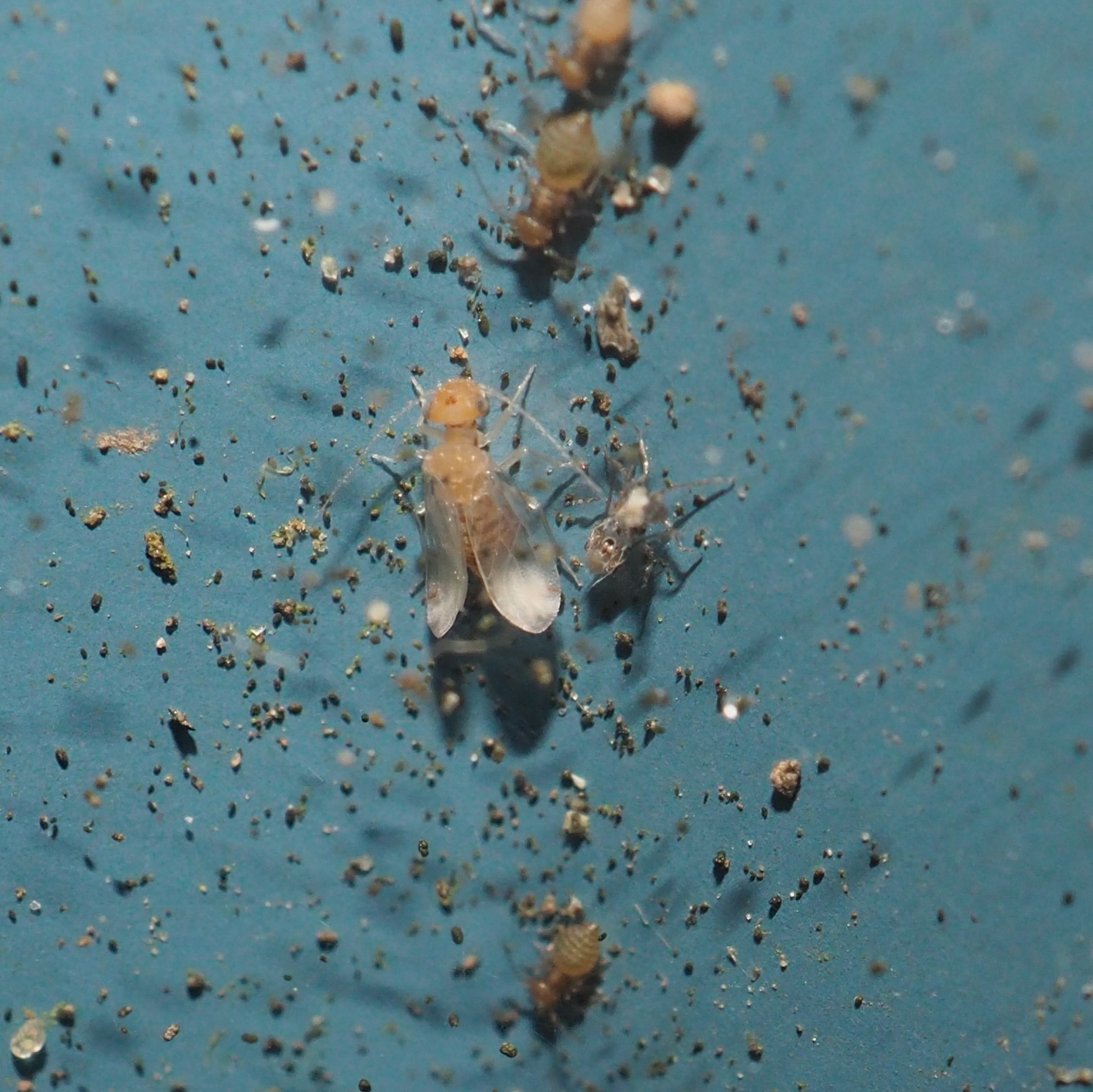
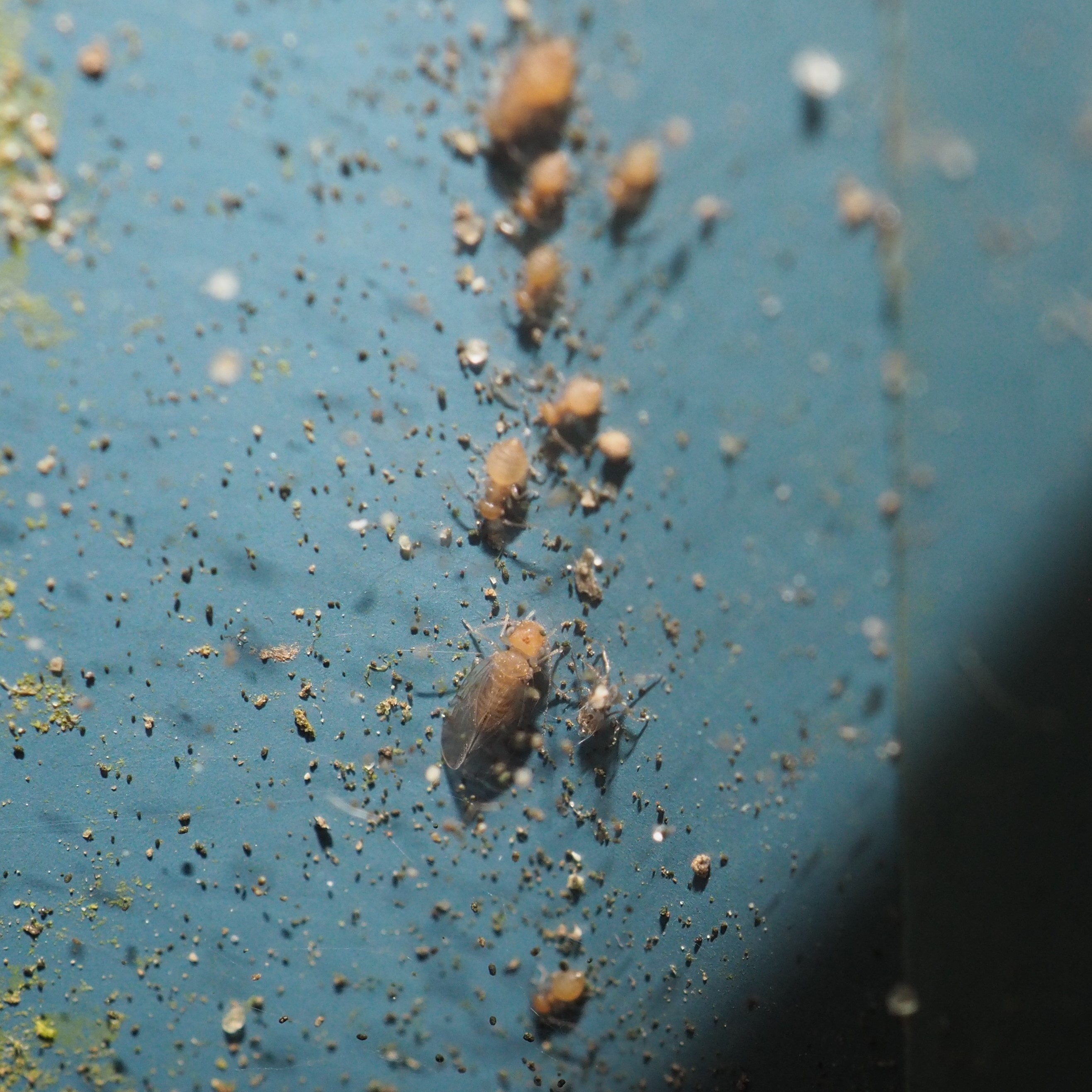
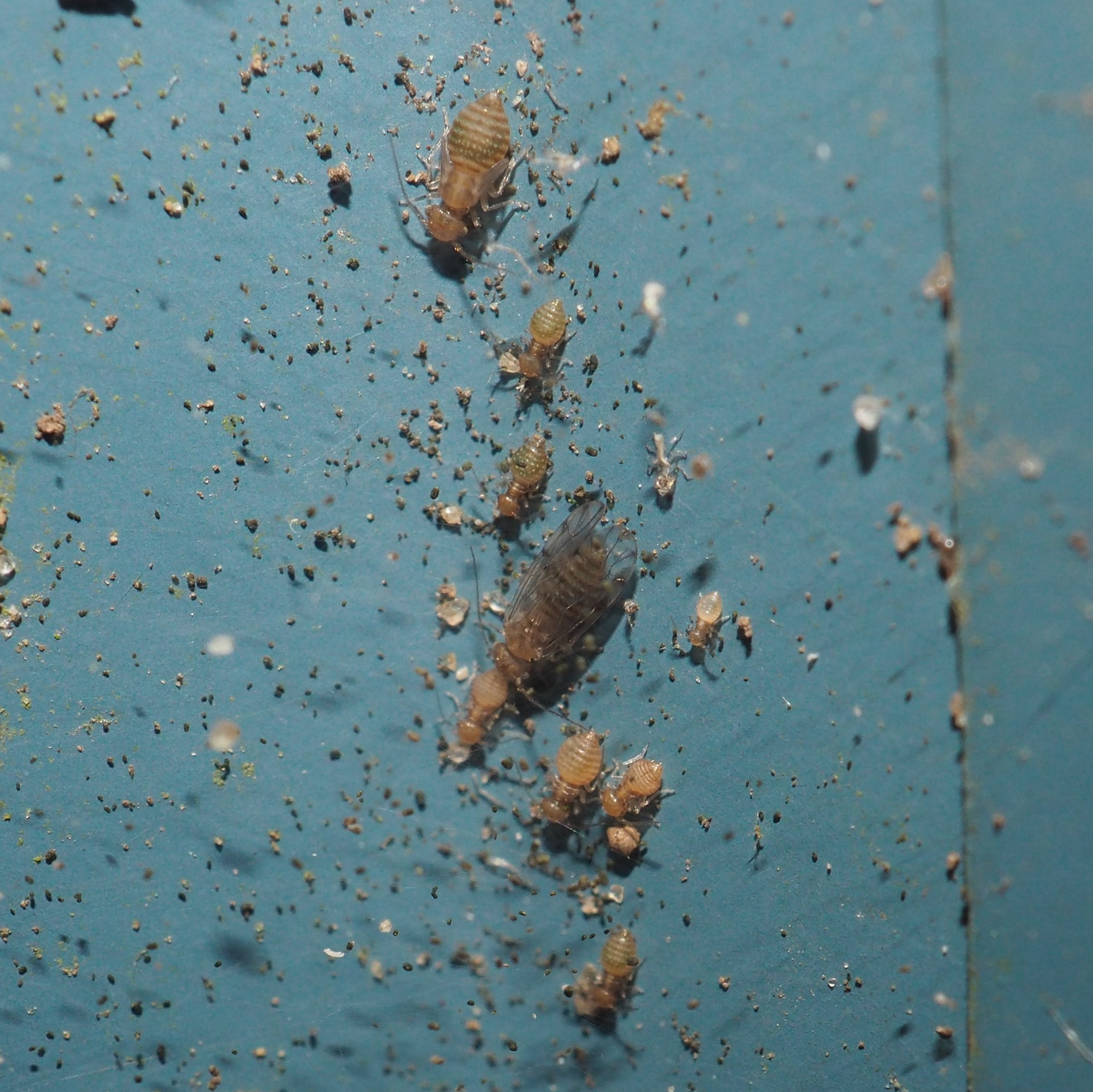
Wham. On September 25, the North Wall seems to have exploded with E. meridionalis egg clusters. From panel 8, where all the action had been taking place, now there are egg masses on panels 3-6 and 9-10. The original Mom has disappeared, but the preponderance of the nymphs of the past couple of months have now made it to adulthood and are busily trying to populate the earth. Here are a few new nexi.
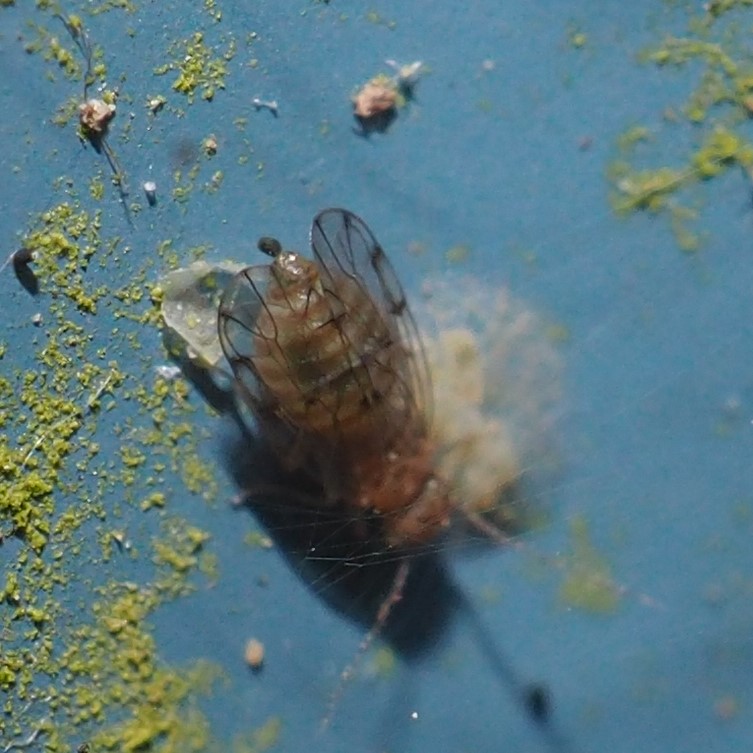
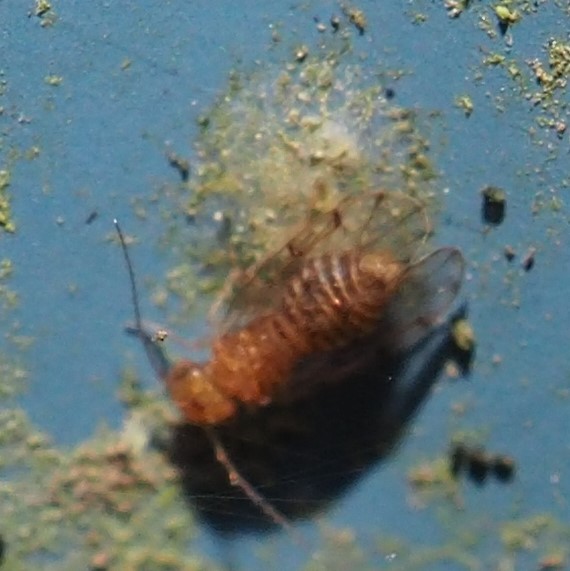
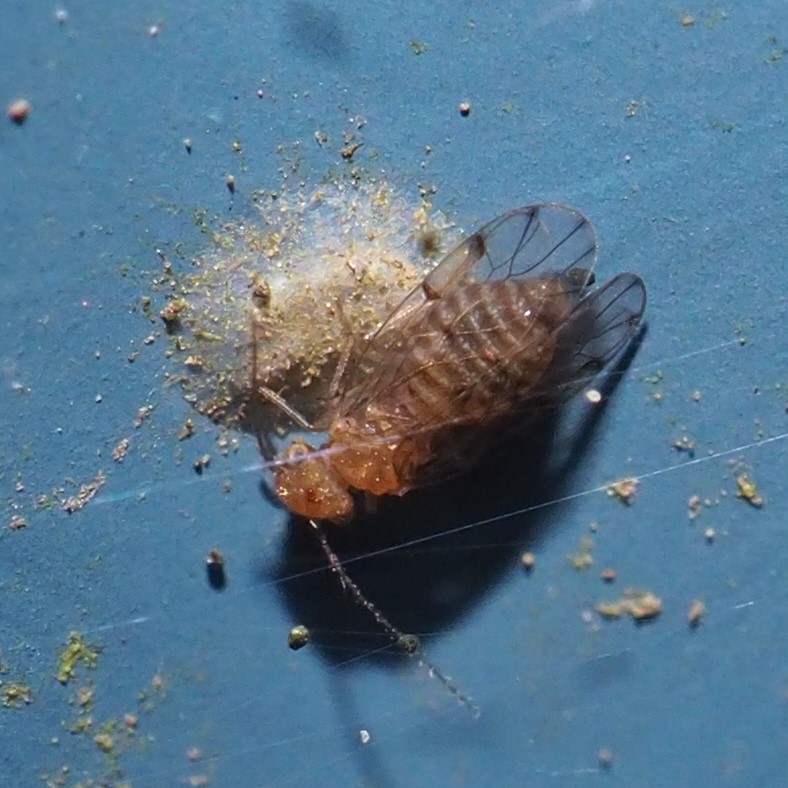
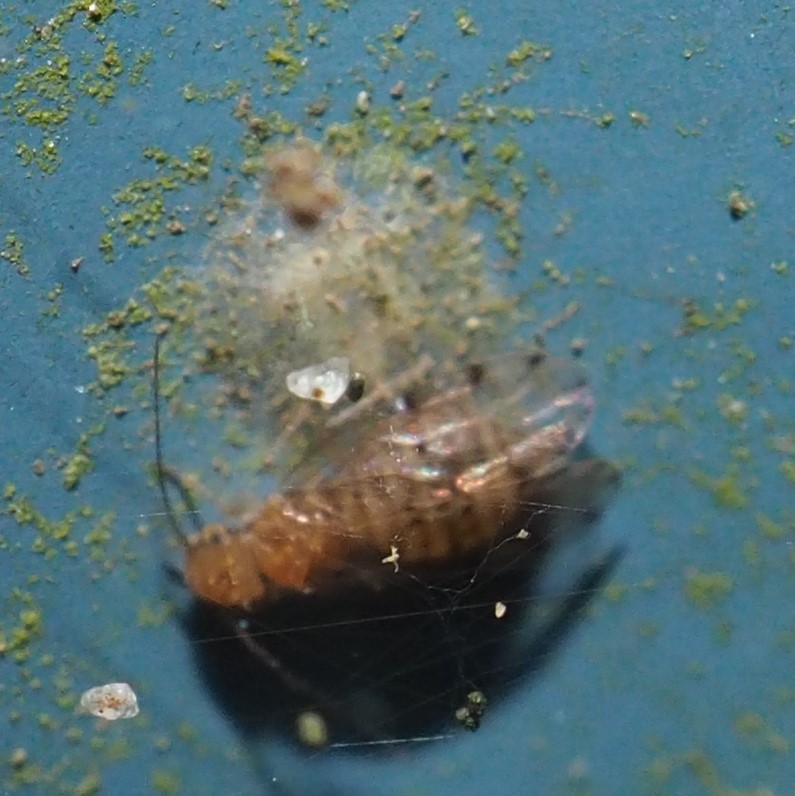
Soon after I wrote exultantly about all the new nexi, the Ectopsocus Adults and Nymphs disappeared. In fact, most of the Barklice's numbers have plummeted - except for Graphopsocus cruciatus. Here we now are at the end of November 2020, and the only view we have of the Ectopsocus colony is this one that shows the eggs on the left side of panel 8, looking good to me! So hopefully they will overwinter as eggs and in the spring we will once more resume our relationship with these fruitful Barklice.
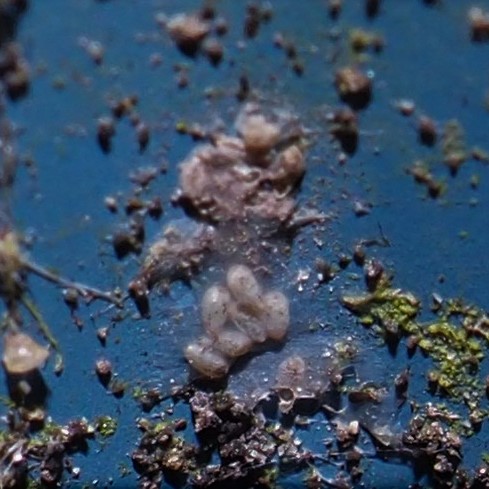
Eventually we will be watching
Barklice 2021 .
Copyright Martha O'Kennon 2020 


































































